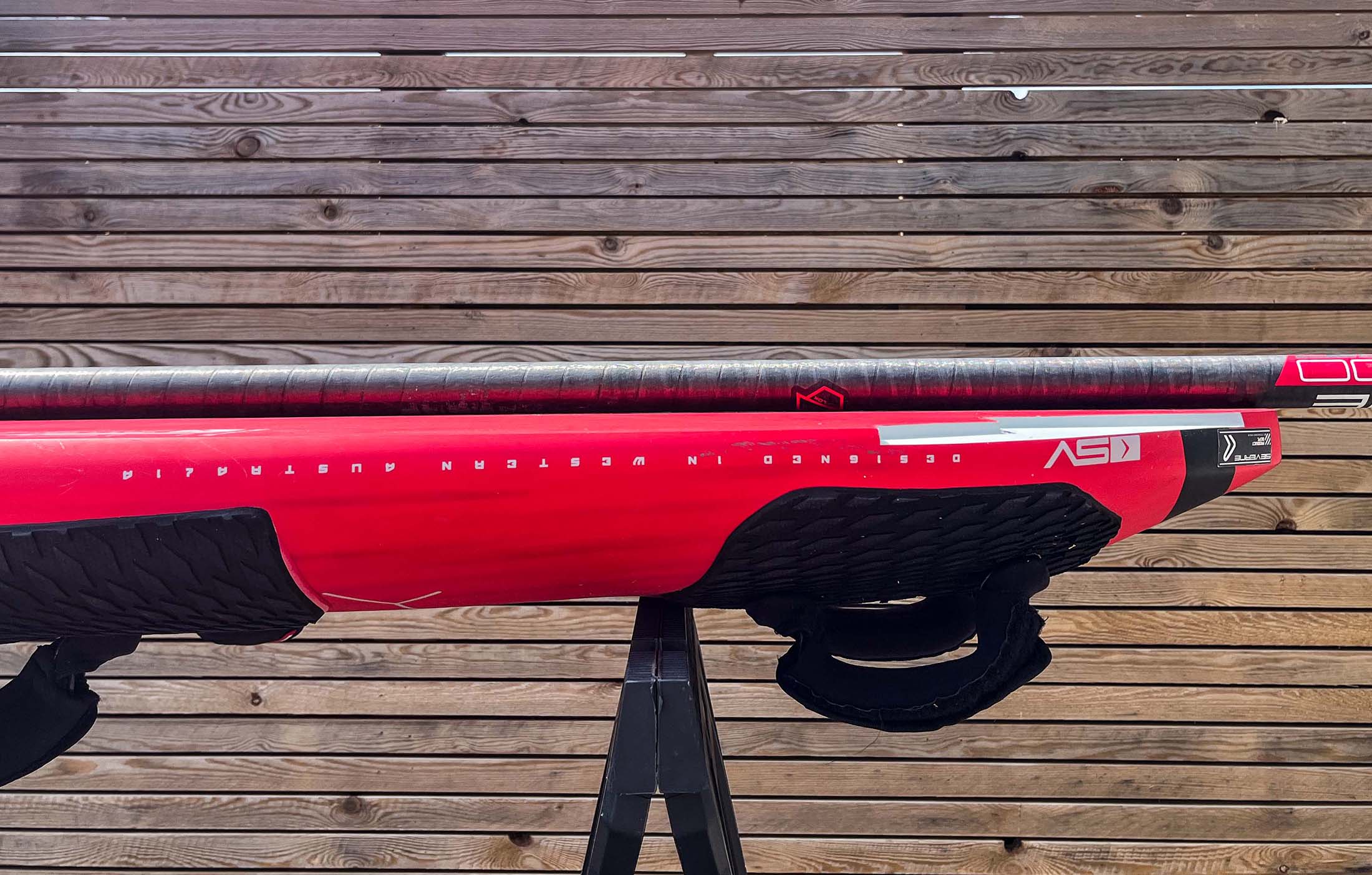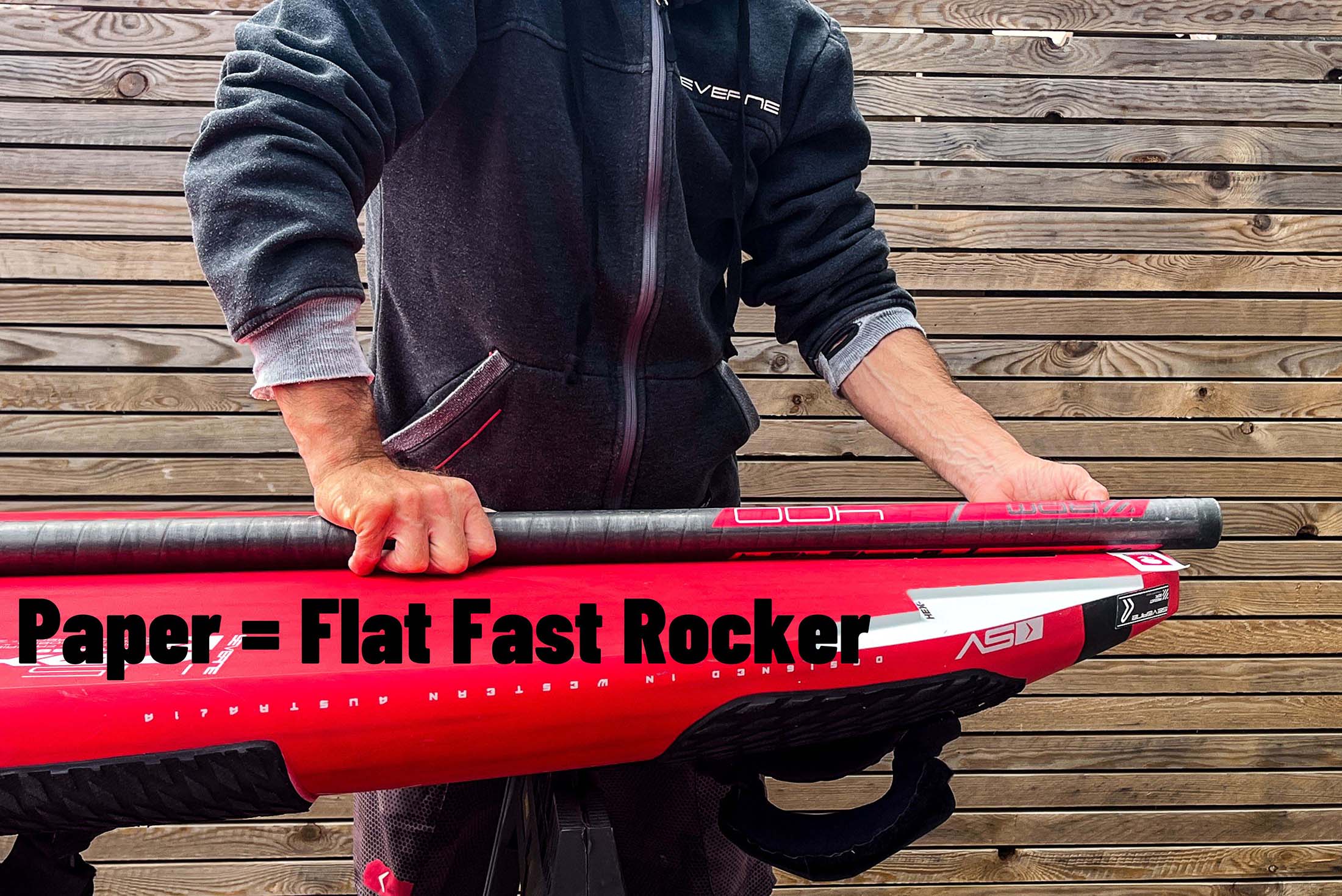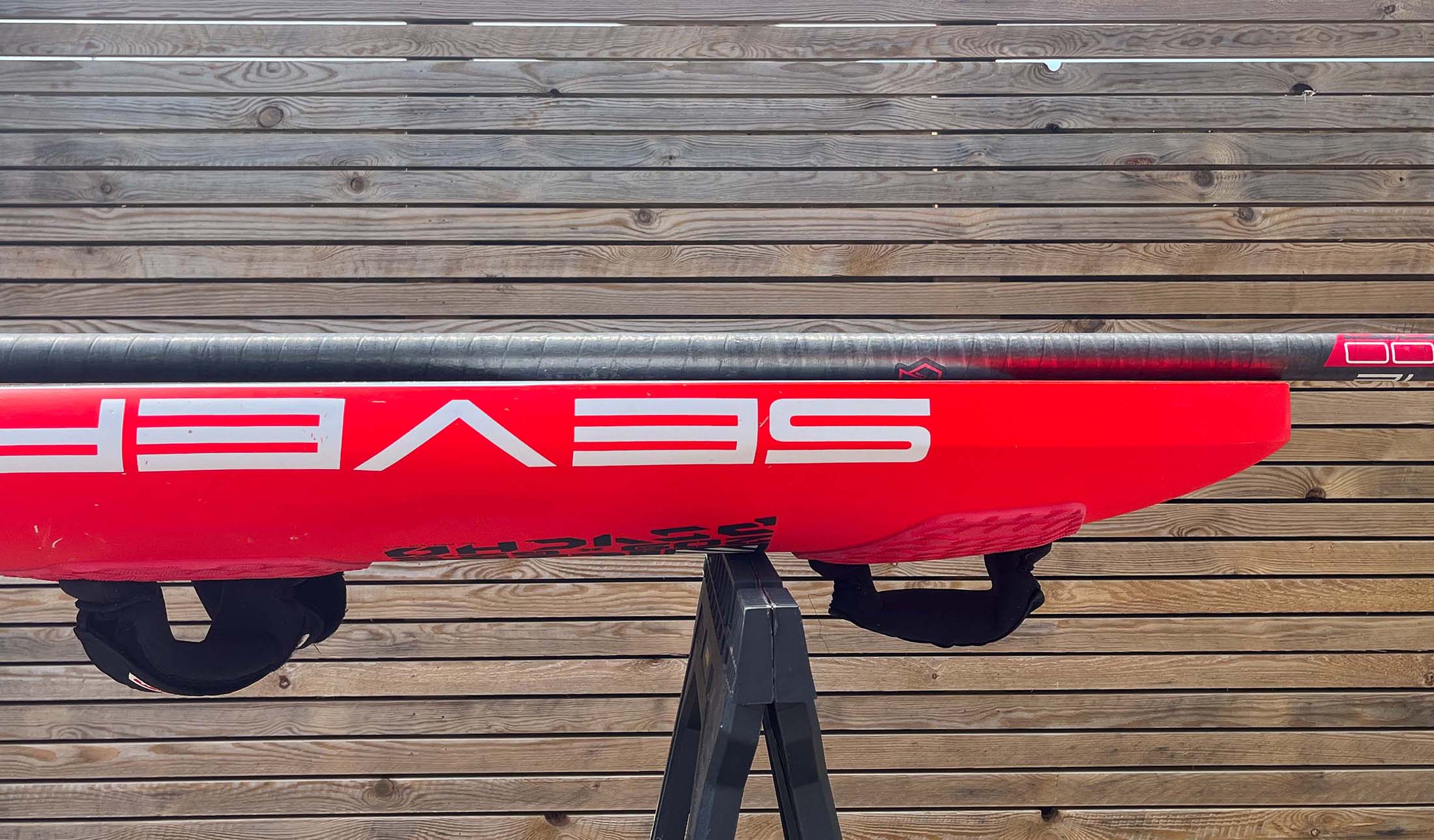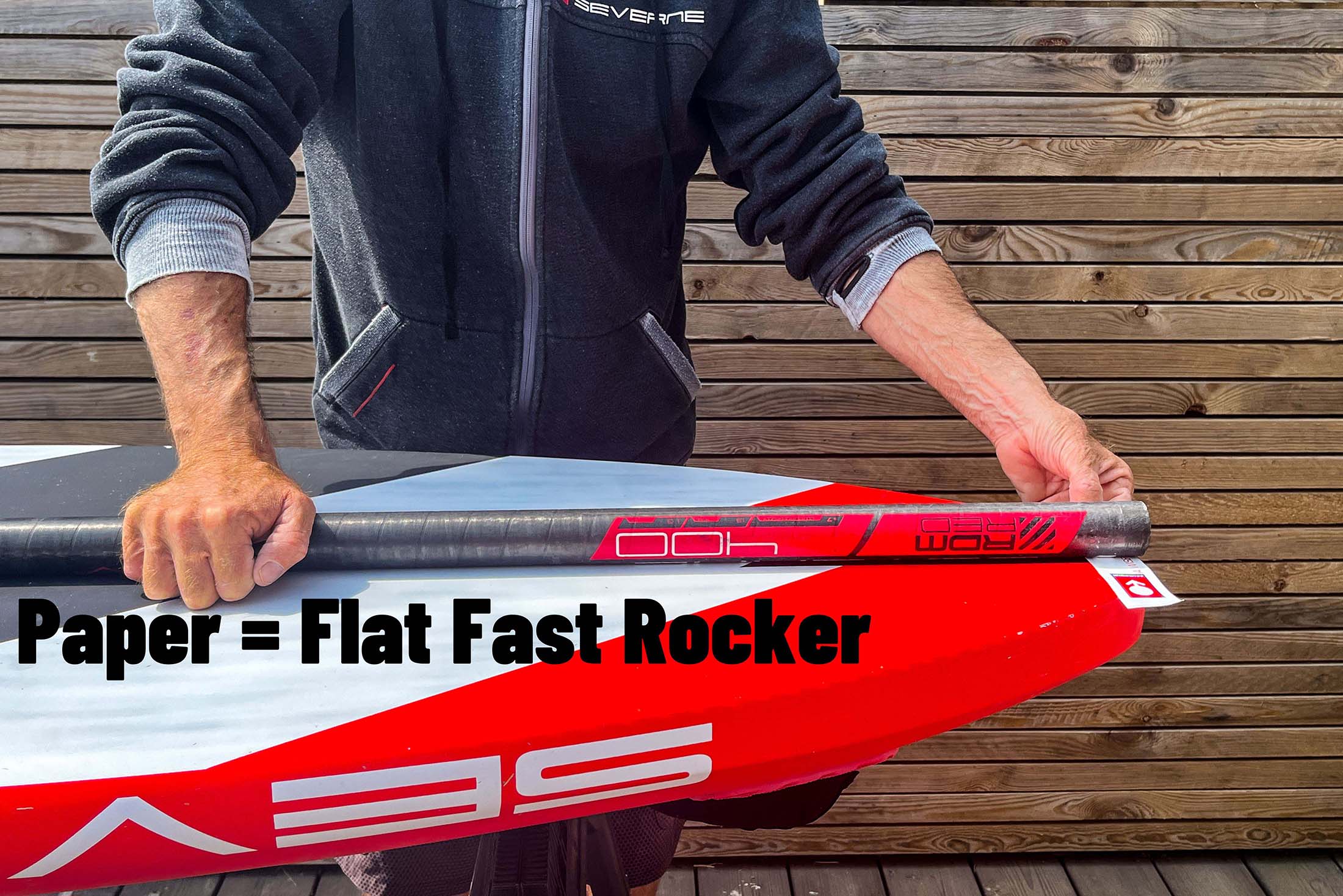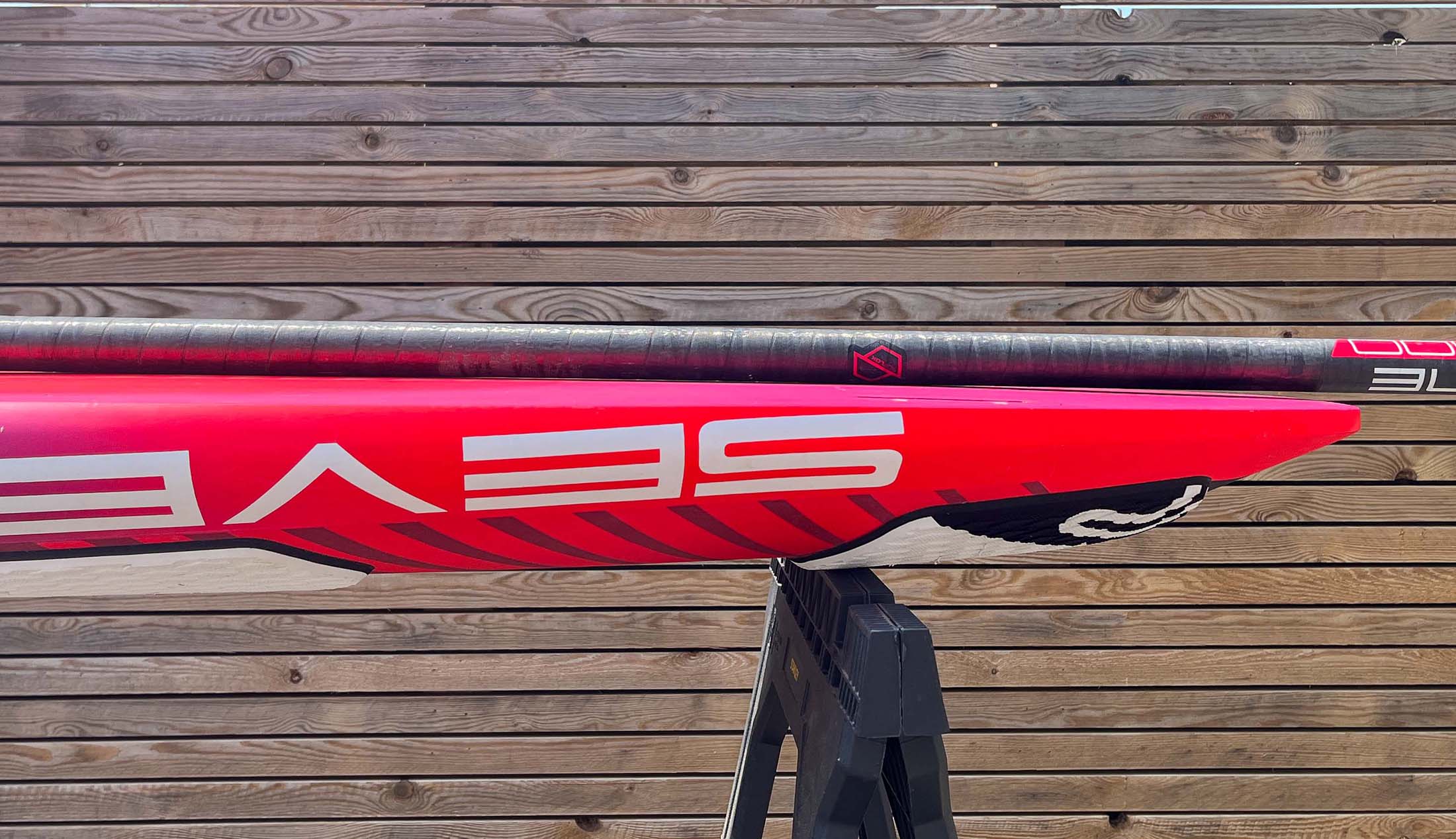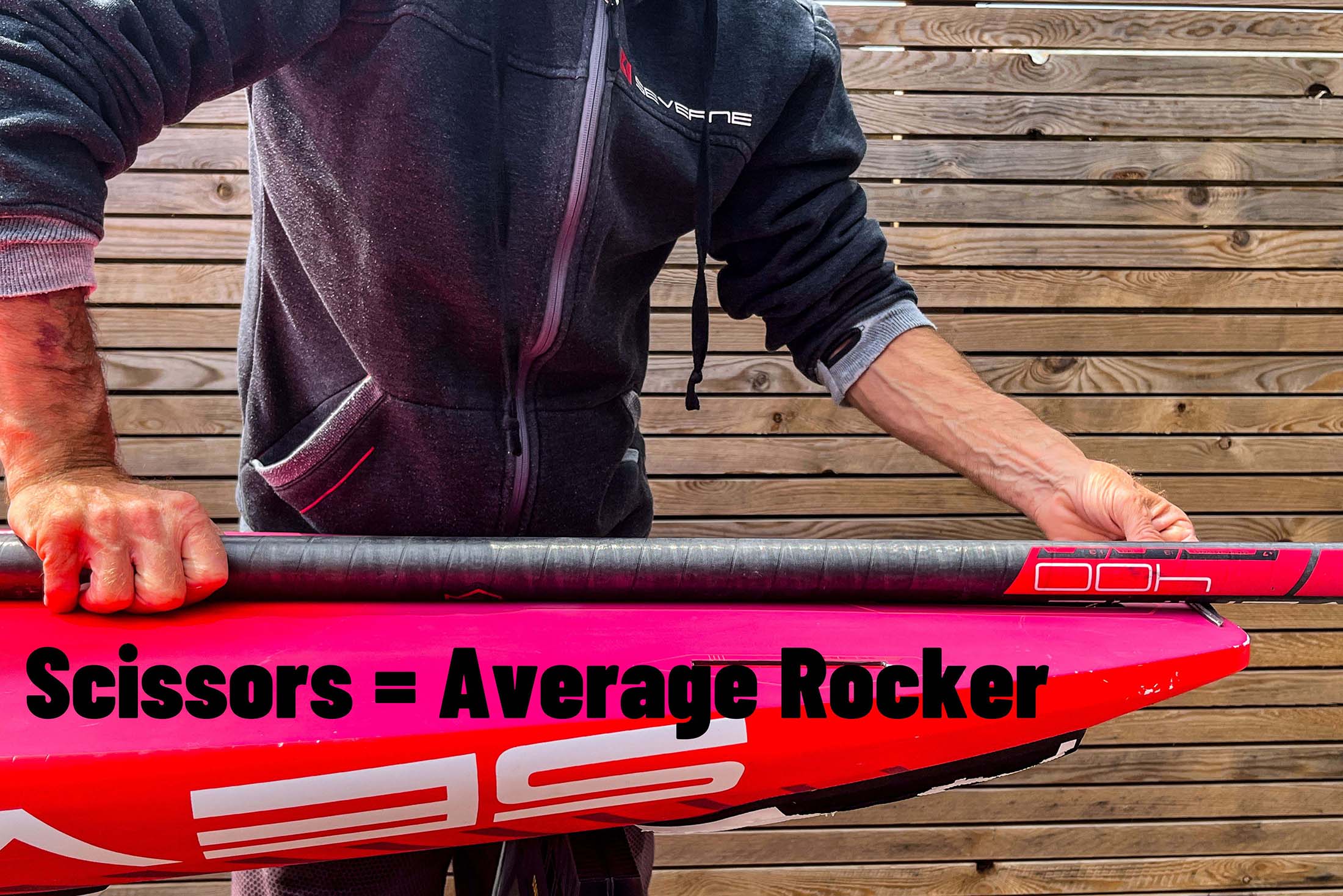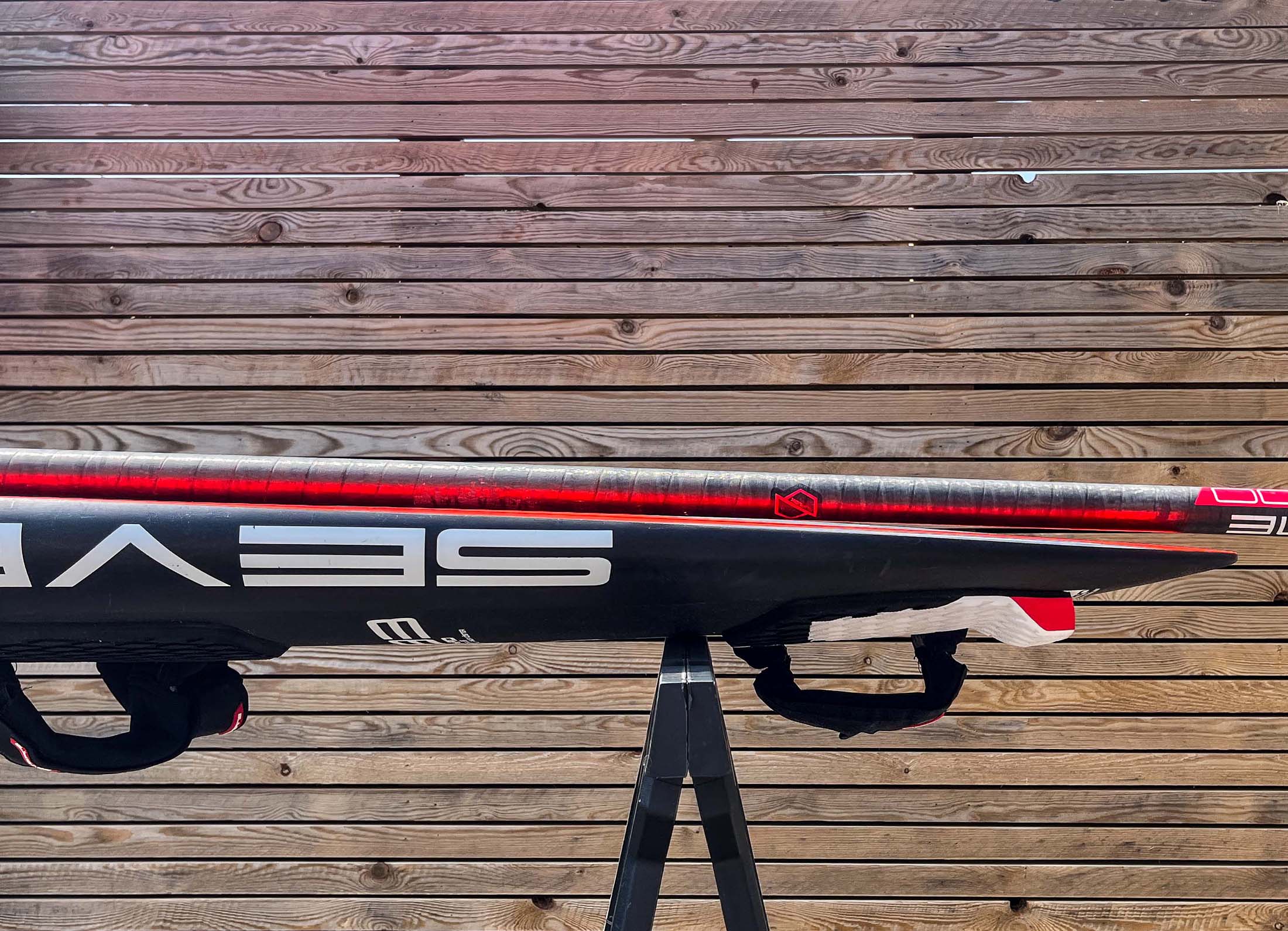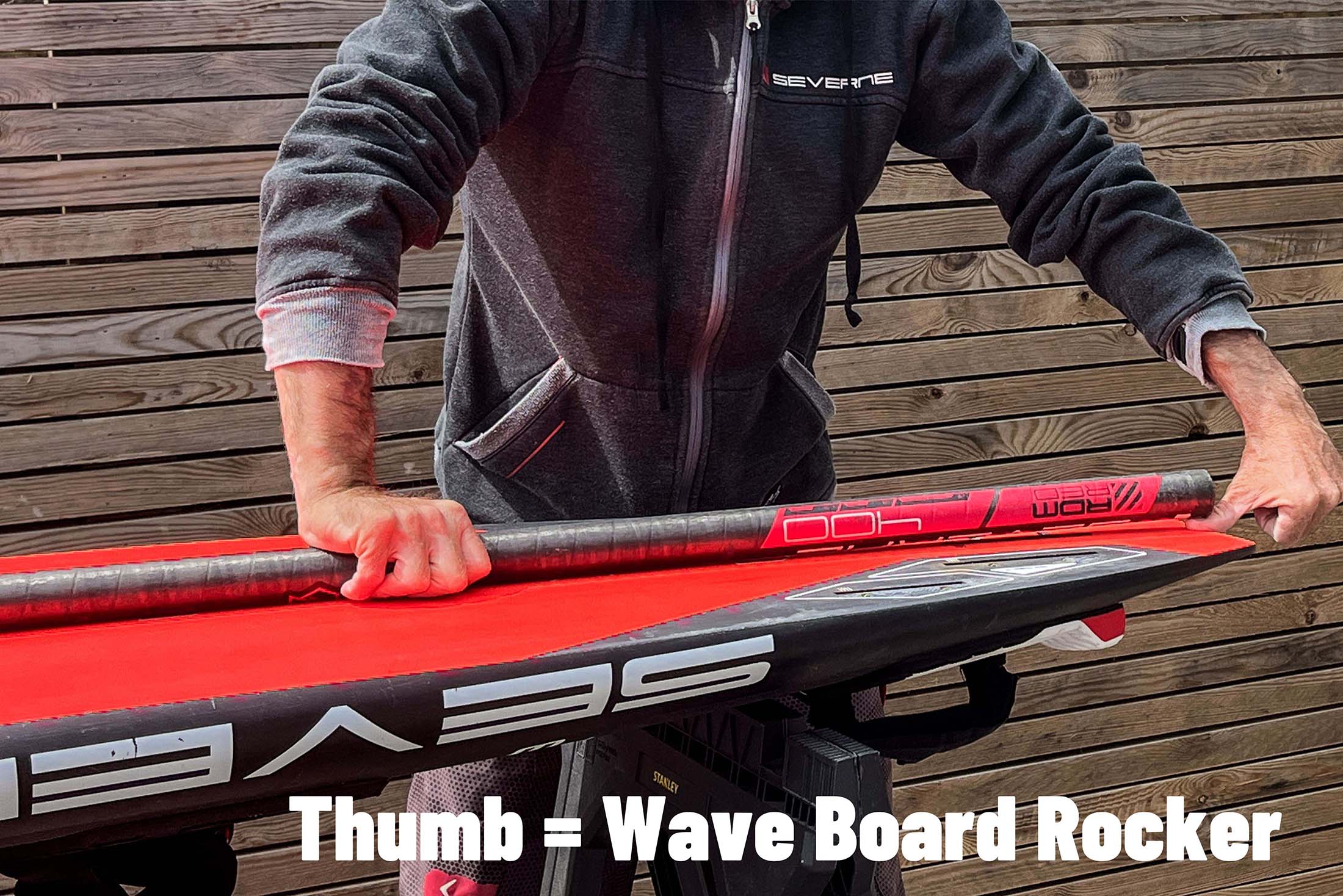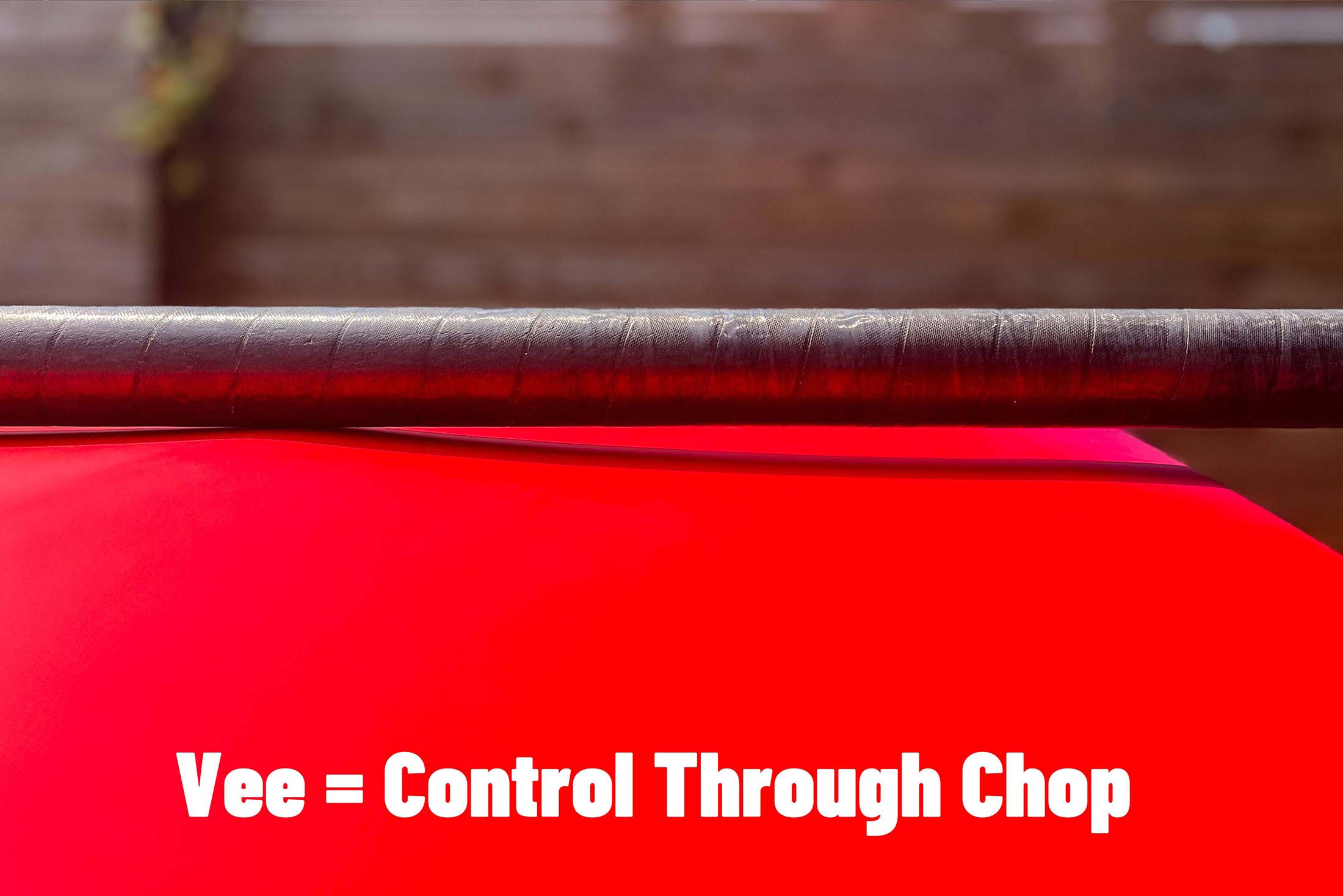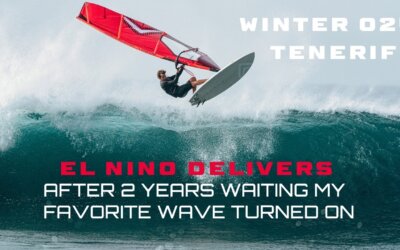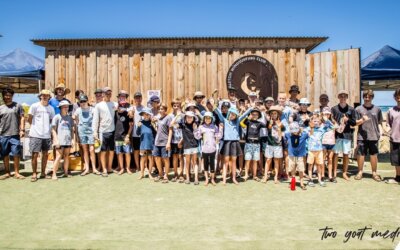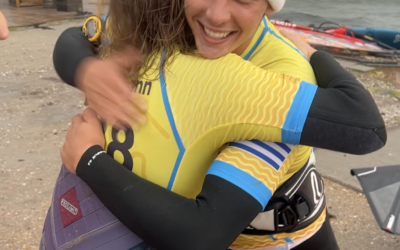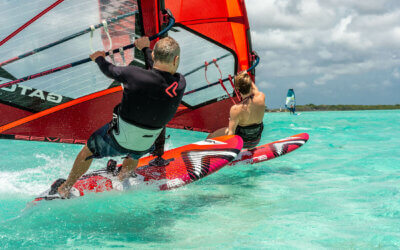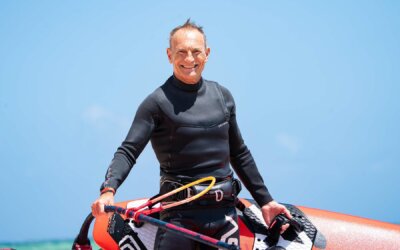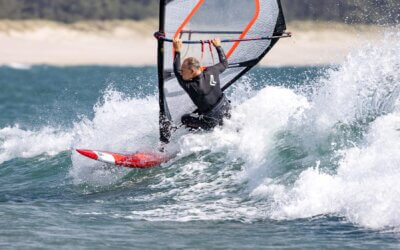
Styles, Shapes & Suitability
Windwise coach and SV Team rider Simon Bornhoft continues his easy-to-follow guide to help choose the right board for your level and style of windsurfing. Last feature we categorized the whole range. For this issue we delve deeper into key characteristics that will help determine which board is right for YOU.
Photos by: WINDWISE & Lorenzo Mittiga / Kate Ocean / Louis-arnaud Lavasier
I’ll have the red one! The choice and perceived complexities when choosing the right board can lead to uncertain and sometimes hopeful decisions. One board might be a perfect planing partner for you, but a miss-match for a different statured sailor of the same level. Also, it’s quite common to hear people say, “I’m not good enough to tell the difference” or “I’m not sure if it’s the right board or me?” Whether you’re trying to better understand your next board choice or downsizing to a more specific style this WINDWISE guide will take you through some key considerations when choosing the right board for you.
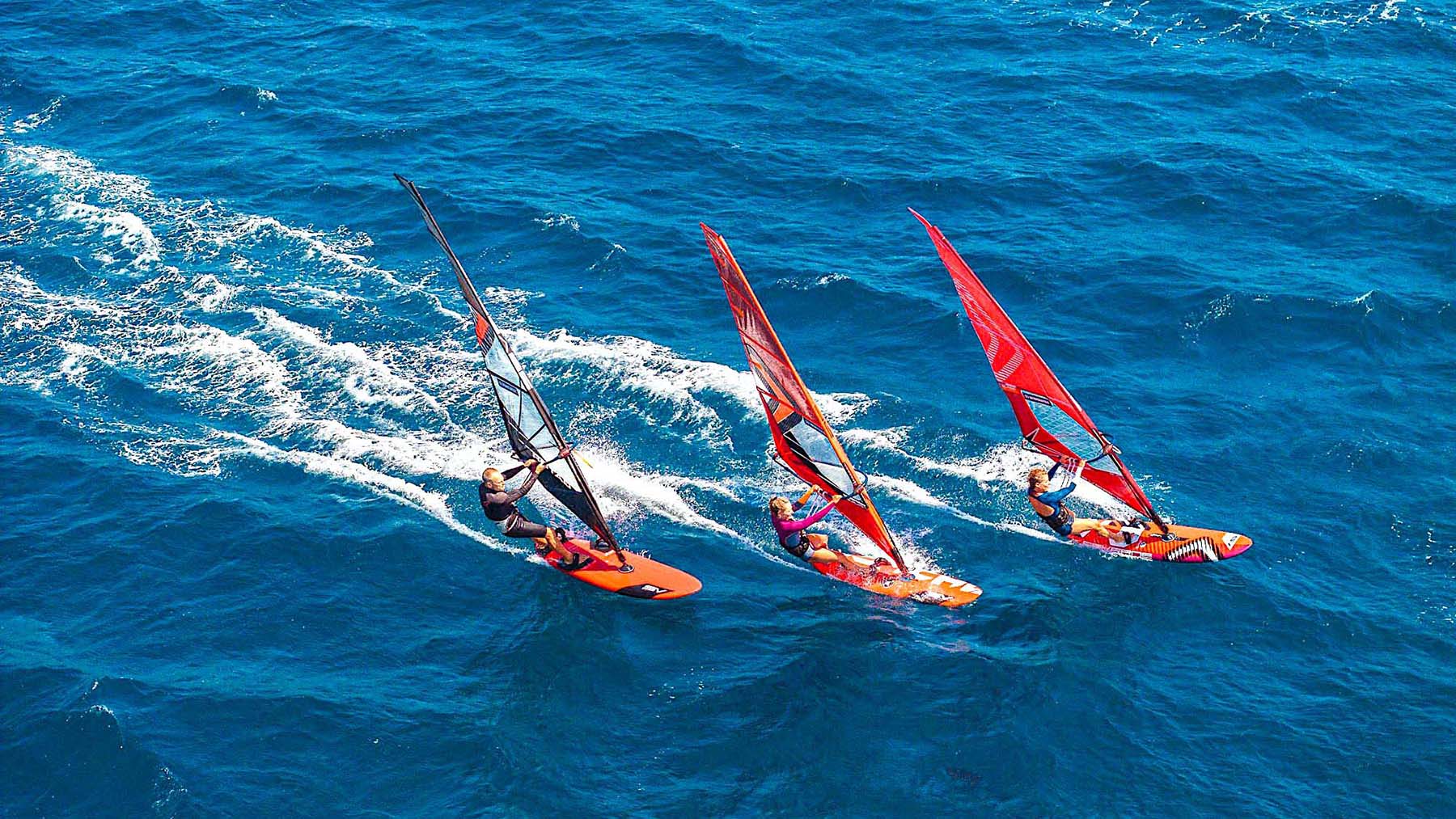
UNDERSTANDING A BOARDS FEATURES
Q. Why is one board faster to get planing and another easier to control?
A. It all comes down to rocker line, rails, vee and plan shape.
Here’s a quick easy and hopefully a memorable way to work out what’s right for you. After reading this you might also want to grab a piece of paper, pair of scissors and a garden hose to check out your own board.
START WITH ‘ROCKER’
Rocker refers to the amount of ‘curve’ on the underside of the board. A board shaped like a pencil would have ‘no rocker’, a board shaped like a banana would be seriously over-achieving in the rocker department.
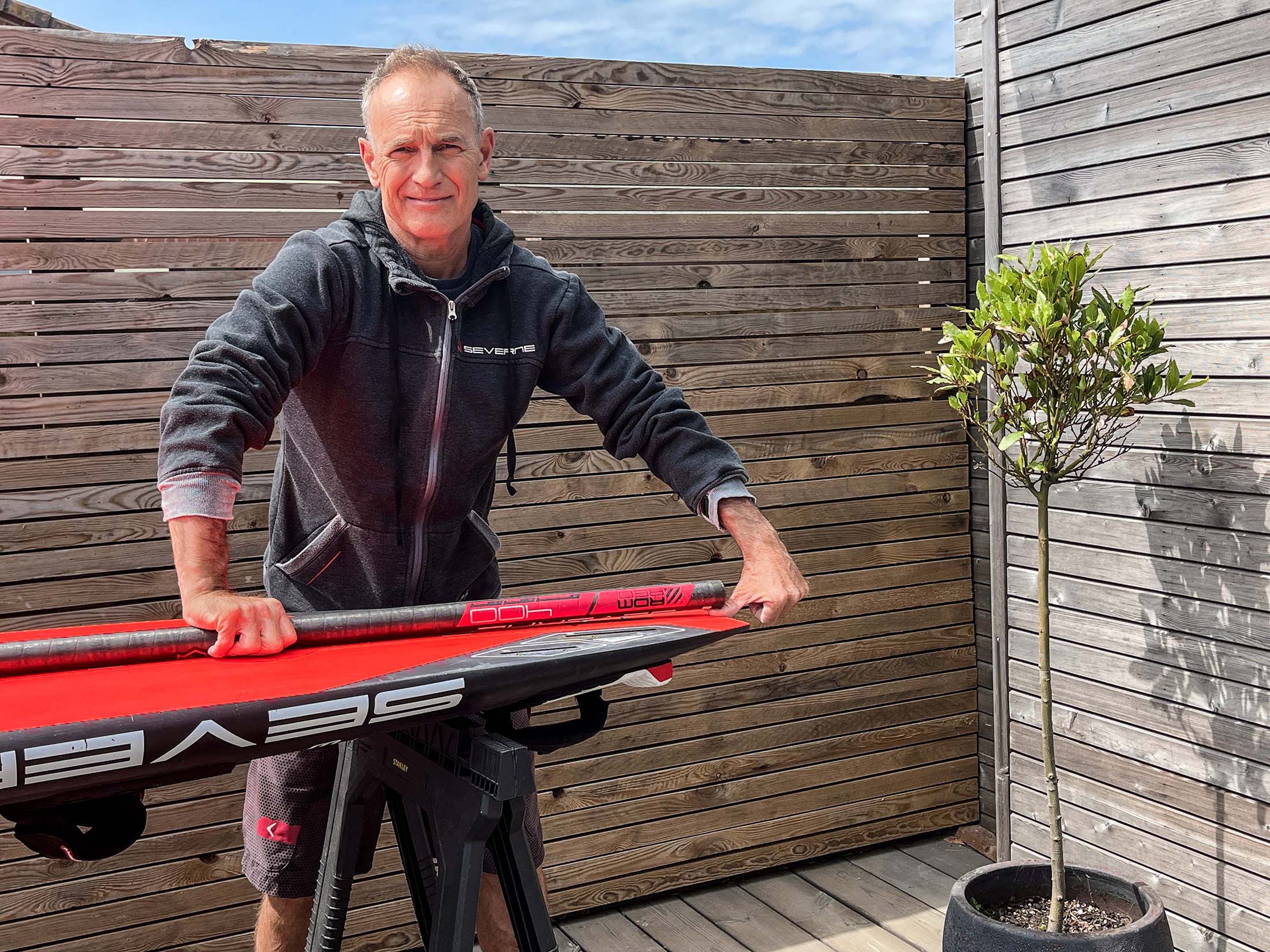
THE FLAT SECTION
Apart from some extreme wave boards, every board has a ‘flat section’ along the underside of the board, pretty much underneath the footstrap area. The longer the ‘flat section’, the more suited it is to early planing, speed, and flatter water locations. The shorter the ‘flat’, the more it is suited to rougher water, control and turning.
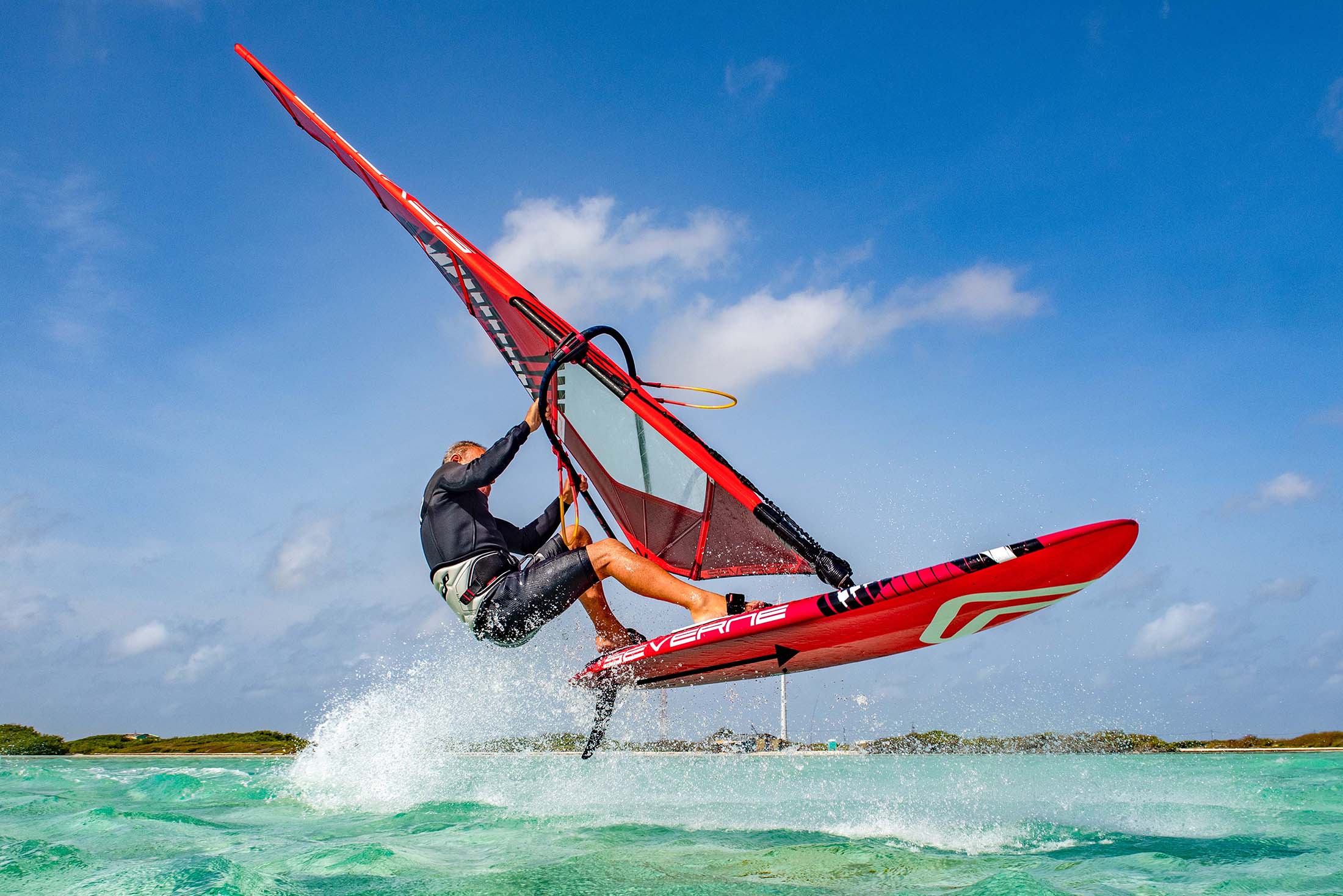
TAIL ROCKER
‘Tail rocker’ is the amount of lift or kick behind the flat section right at the tail, minimal differences massively affect a boards early planing, speed, control and suitability for waves. So get it right for what and where you sail!
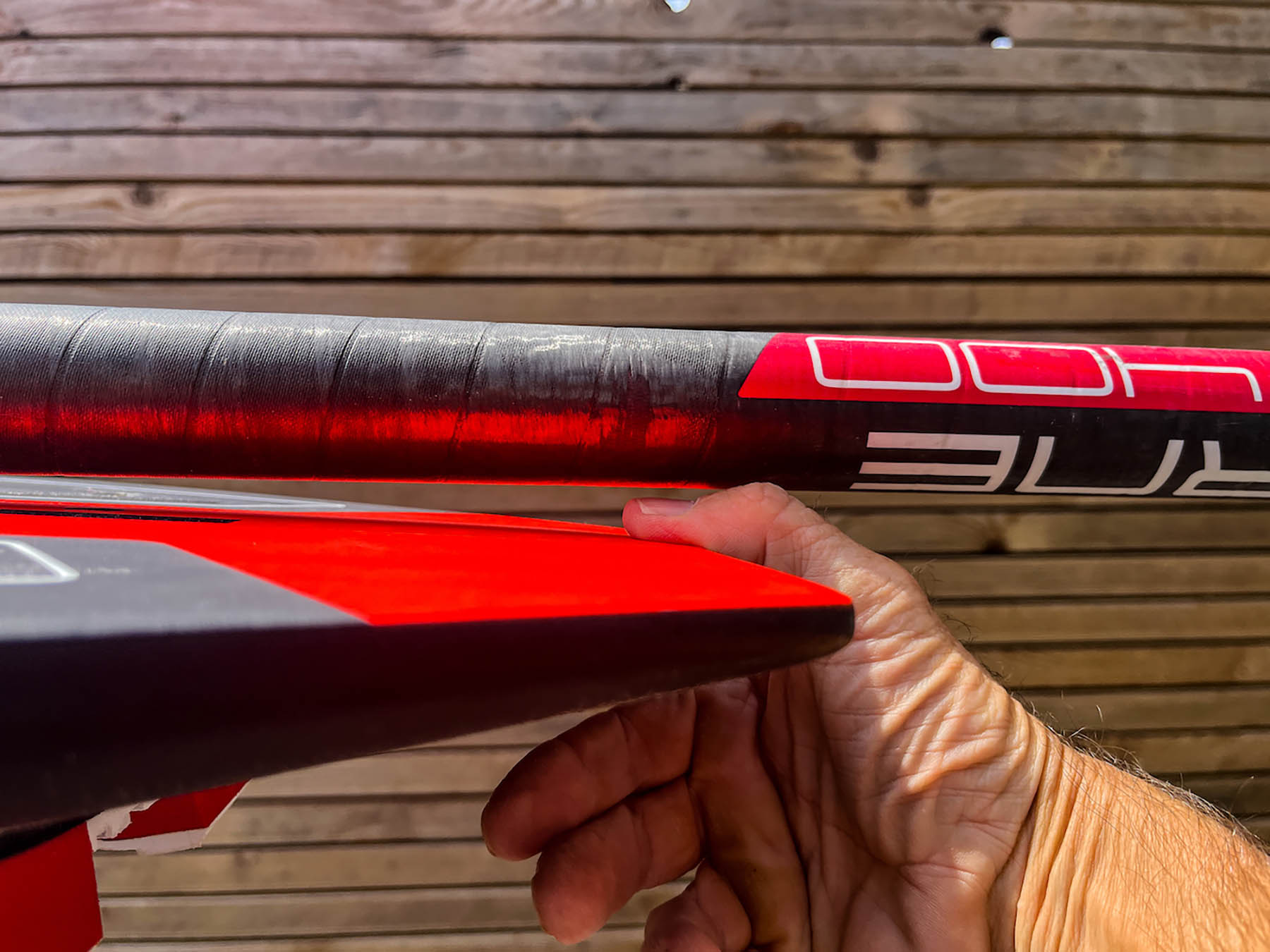
NOSE ROCKER
‘Nose rocker’ is the pronounced lift towards the nose, which gradually builds from the furthest forward point of the flat section. This helps ease the board over chop and waves, hence Dyno’s, Pyro’s, and other Severne wave boards will have more nose rocker than the Severne Fox and Psycho. Note the nose rocker difference between the white Psycho and red Dyno.
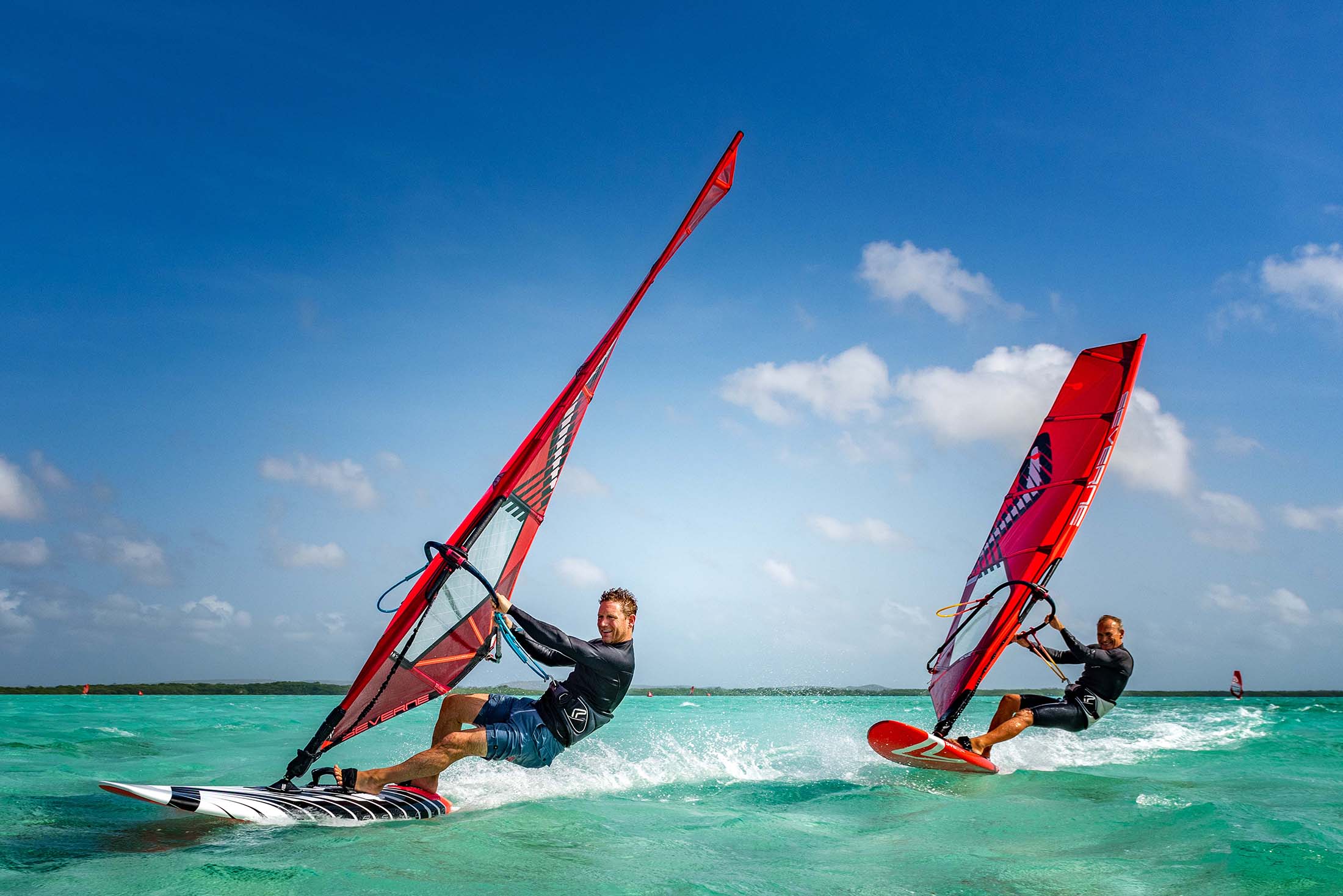
STAGE 1: SIMPLE WAY TO GAUGE TAIL ROCKER = Paper – Scissors – Thumb!
To choose a board for YOU, focus on the tail rocker as this pretty much determines the ‘style’ of the board. You can easily do this yourself.
Flip the board upside down and place a straight edge on the centre-line of the board, with one end aligned with the tail. Push down on the straight edge in the middle of the ‘flat section’, (Approximately the area between the front and back straps). Now use our easy to remember Windwise ‘Paper, Scissors, Thumb’ to gauge the tail rocker. Remember, small variations can make a massive difference in the performance of the board.
PAPER = Flat Rocker E.g Fast Freeride E.g. SEVERNE Fox & Psycho
Push down on the flat section. If the straight edge is still touching the tail or you can just slide a piece of paper under it, the board is very likely to plane early, be fast, and more suited to flatter water. If you sail in rough breaking white water, a long flat, and minimal tail rocker profile like this can be too fast and hairy. But if you’re carrying larger sails, looking for great speed e.g. Fox), and want lightning early planing like the Psycho, then this kind of flat is fast!
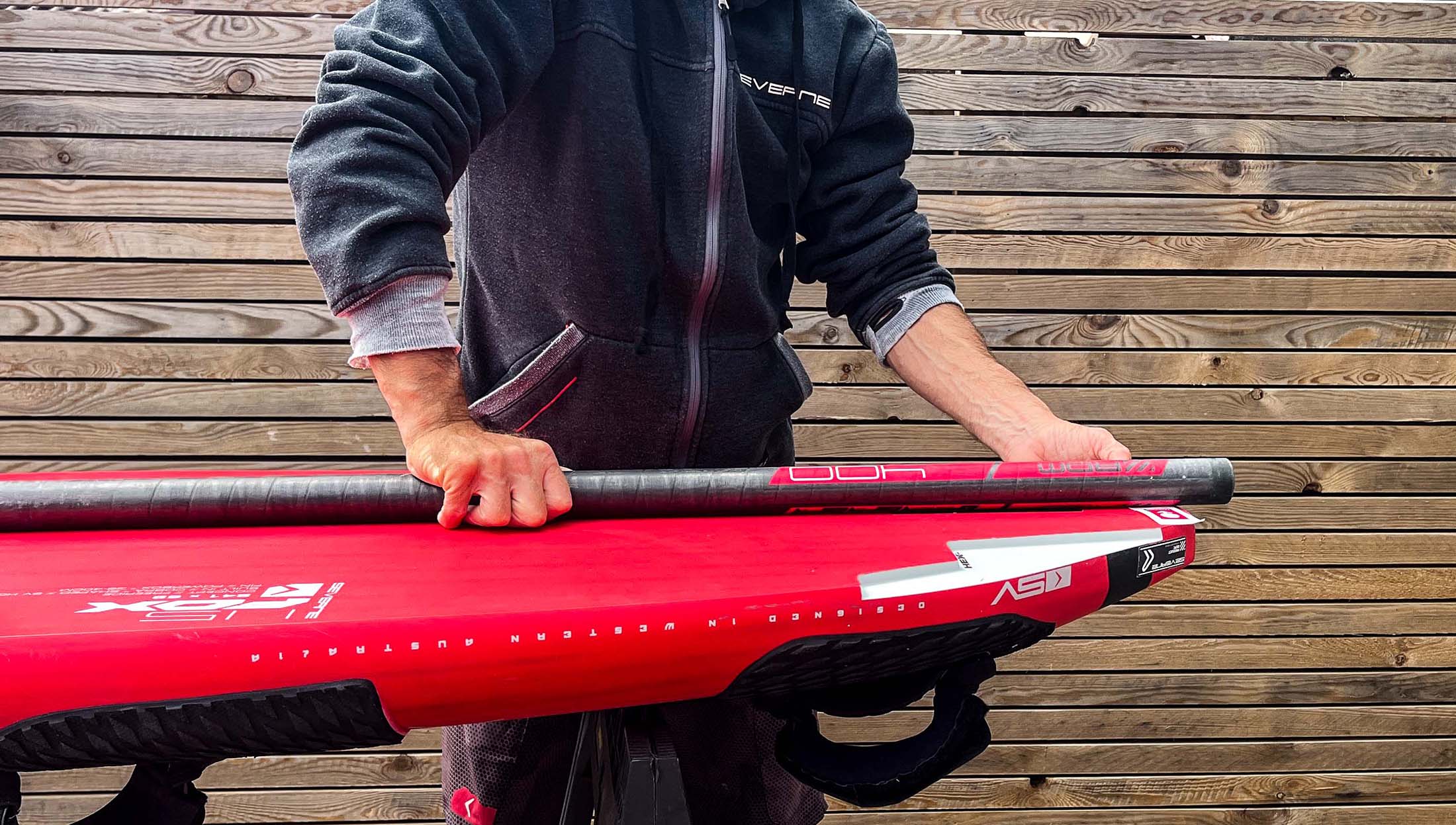
SCISSORS = All-Round Rocker Freewave E.g. SEVERNE Dyno
If you push down on the flat section and there’s just enough room under the straight edge to slip a pair of scissors, then the board is a good compromise between reasonable early planing, higher wind control and decent manoeuvrability. If you sail on both flat water and the sea, using a wide range of sail sizes (particularly sub 6m) then this is a good compromise tail rocker, hence why the Dyno is so versatile.
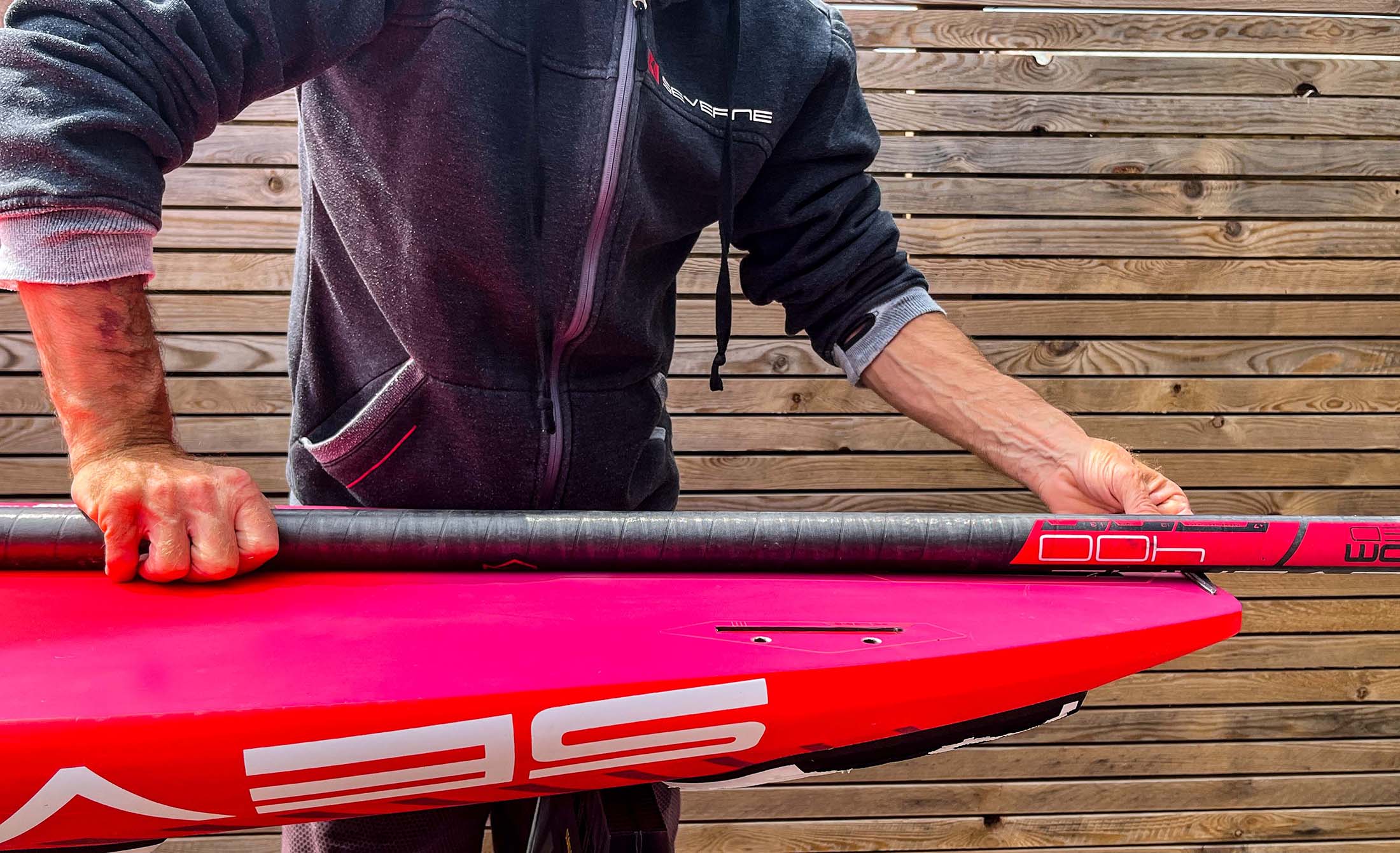
THUMB = Wave Rocker + Wave Boards E.g. SV Pyro / Nano / Stone / Mako
Push down on the flat section. If there‘s enough room under the straight edge to slide a finger or thumb, the board is definitely focused towards higher wind control, rough water, tighter turns, wave, and much less about early planing.

ROCKER SUMMARY
There are obviously varying degrees, but this ‘Paper – Scissors – Thumb’ is a quick easy way to work out what your board is designed for….
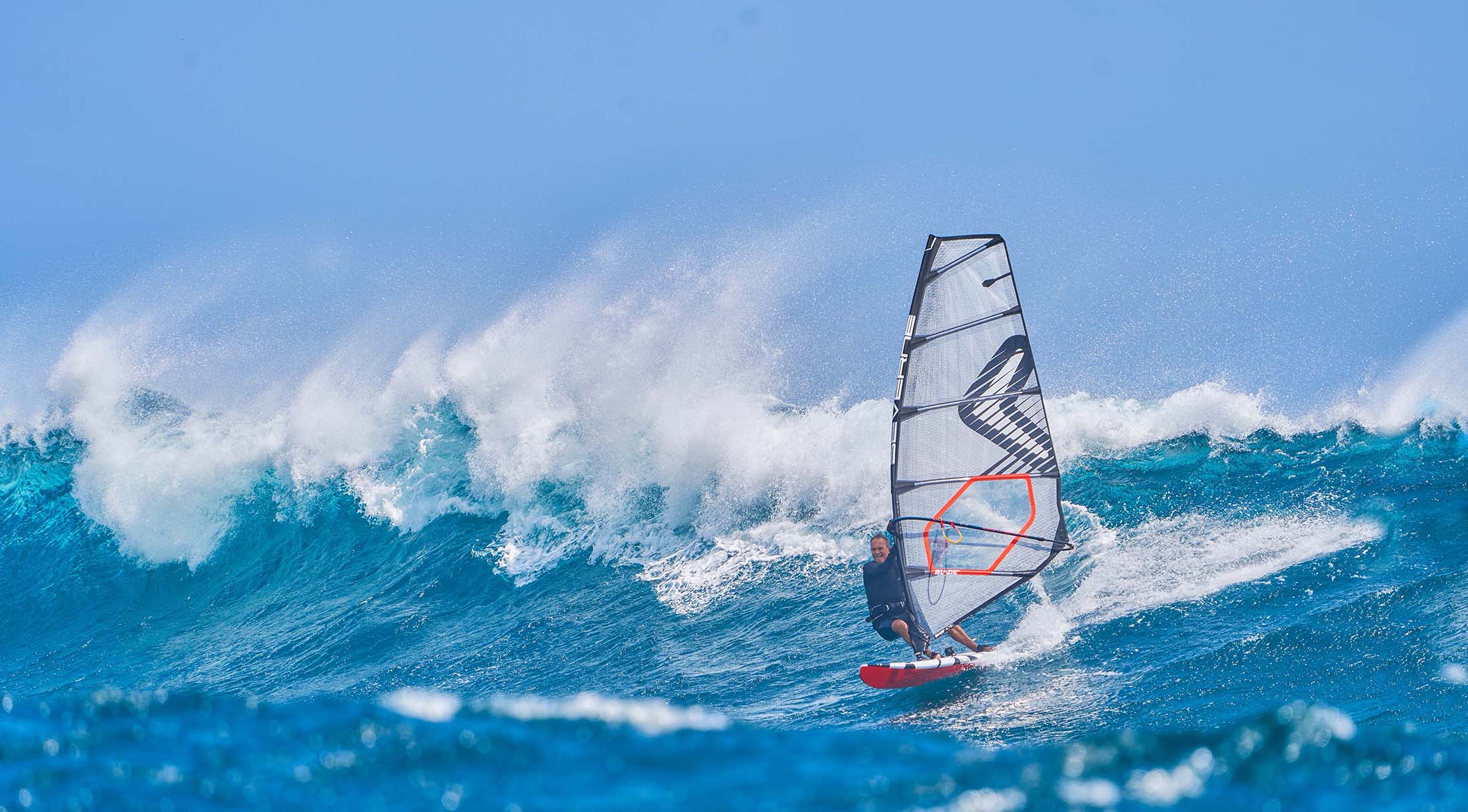
Simon’s Summary..…
“Boards with a longer flat section, minimal tail rocker, and less nose rocker are orientated towards flatter water, early planing, or straight-line speed. So if you’re looking for larger, fast Freeride or super early planing boards for flatter water, go for SV Fox or more playful Psycho.”
“Boards with a shorter flat section and more tail and nose rocker are more orientated towards higher wind control and tighter turns. So, if you’re looking for smaller Freewave, less top speed, more control and venturing into waves, but you still want assistance getting planing. then go for the SV Dyno or Pyro if you are sailing in breaking white water a lot.
“Boards with minimal flat section and maximum rocker are full on dedicated towards high winds and living on a wave face. If that’s your bag and your local sailing spot, then go for the Pyro (fast wave board), Stone or Mako!”
STAGE 2: THE EASY WAY TO UNDERSTAND RAILS
Whilst ‘Rocker Line’ is arguably the most influential design feature on a board, we also consider rail shape.
Question? What ‘grips’ the water more, a hard sharp rail or a soft rail?
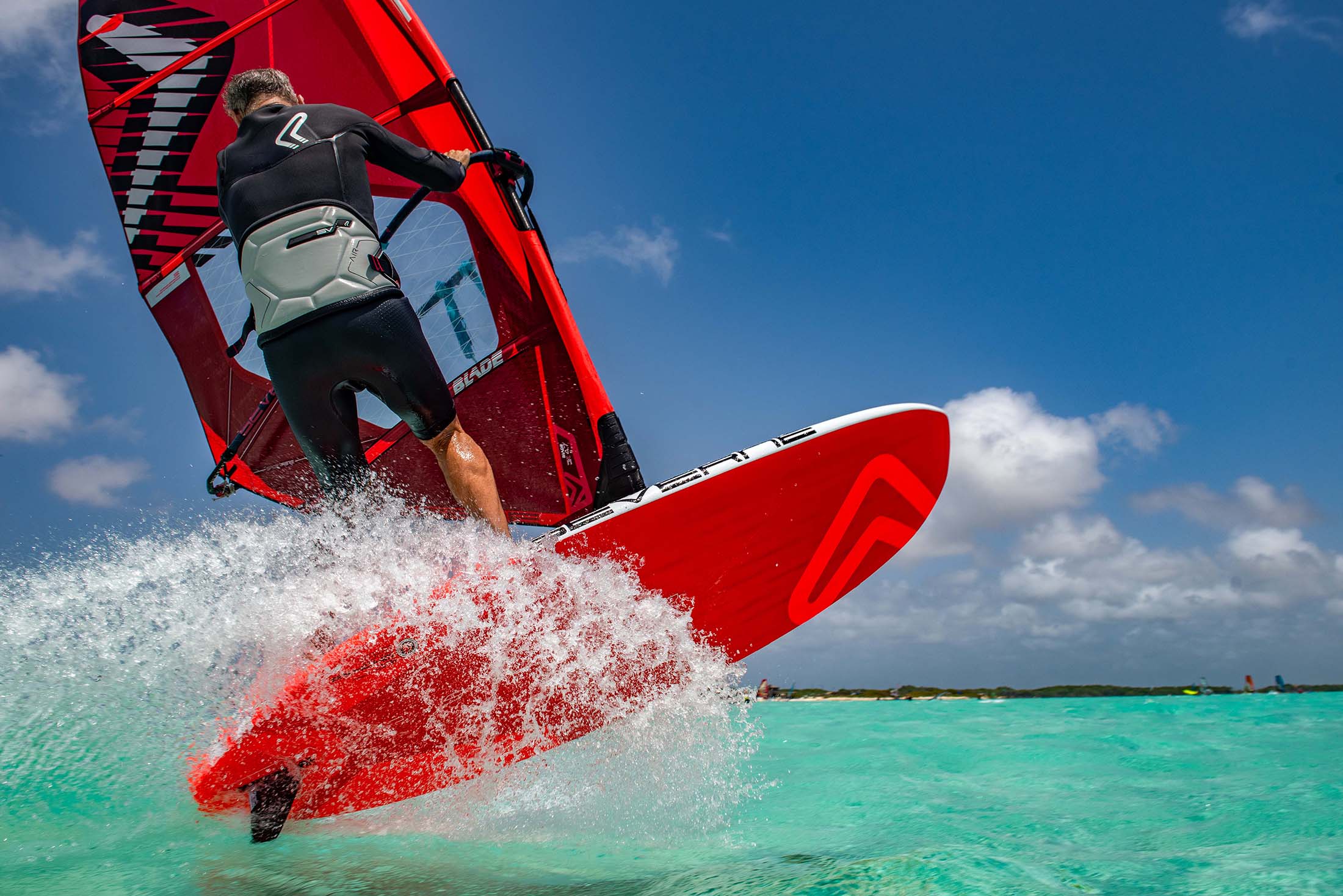
Sharp Rails
On sharper harder rails (more noticeable towards the tail), the water shoots straight off the acute ‘release edge’ and this equates to greater speed.
Soft Rails
Run the hose (with the same pressure) towards the mid – forward rails, and the water wraps around and ‘grips’ the rail. Which is what you want when you carve into that turn. Sharp boxy rails upfront make a board much harder to gybe.
Thin rails
Thinner rails also make it easier to bury the rail into the water, hence boards like the Dyno and Pyro giving you plenty of grip in the tightest of turns.
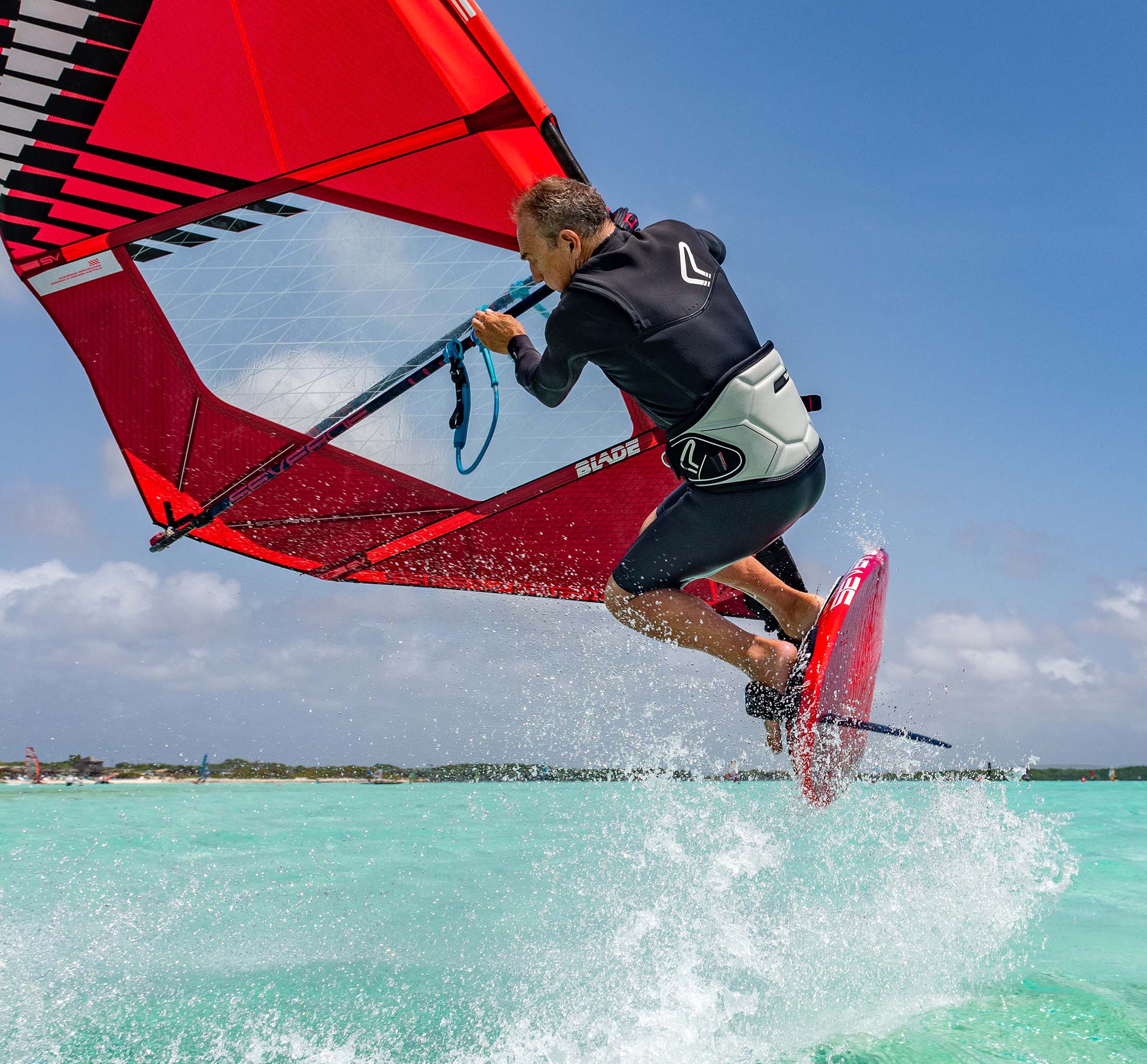
So, if you take two identical boards, but one had softer rails throughout, the softer railed board would be slower to plane, but feel more stable and grippy in turns and rougher water. The sharper railed board would be faster, but less forgiving in breaking water and more extreme conditions.
STAGE 3: OTHER KEY FEATURES
There are other features to be aware of: Plan shape, width, concave, and vee.
If you compared two boards with identical rocker and rail profile, but change one feature, this is what you’d ‘feel’.
- More curved plan shapes (the boards outline) offer greater stability, grip and turn better, but are generally slower, E.g. wave boards.
- Straighter, narrower, parallel plan shapes are usually faster, E.g. Fox.
- Wider boards are more stable and plane earlier (especially if they have flat tail rocker), but become ‘bouncy’ in rough water.
- Narrower boards are slower to plane, have higher top speeds, and slice through chop more easily, especially if they have lots of vee.
Vee
‘Vee’ is the ridge that runs along the centerline on the bottom of the board. Designs with minimal ‘vee’ ask more of the fin for lateral resistance and are harder to control. Boards with decent amount of ‘vee’ benefit from greater directional stability, bust through chop, grip in turns, but have a marginally slower top speed. Boards like the Dyno and Fox have plenty of vee to help their incredible stability through chop and the rough stuff. In the case of the SV Fox, it’s partly the vee that gives incredible control at the highest of speeds in the worst conditions = comfort and ease at speed!
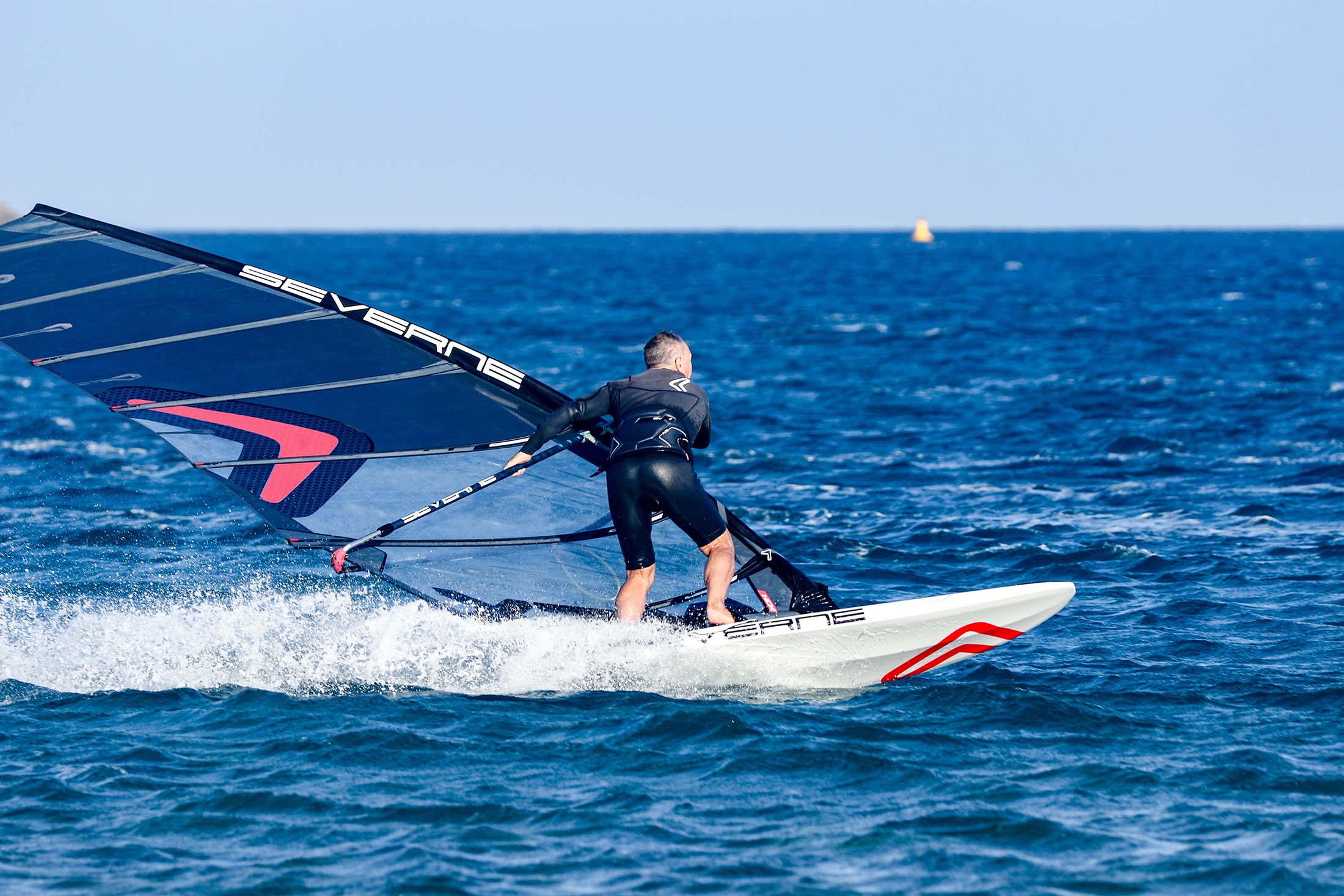
The Severne Fox features a vee bottom shape.
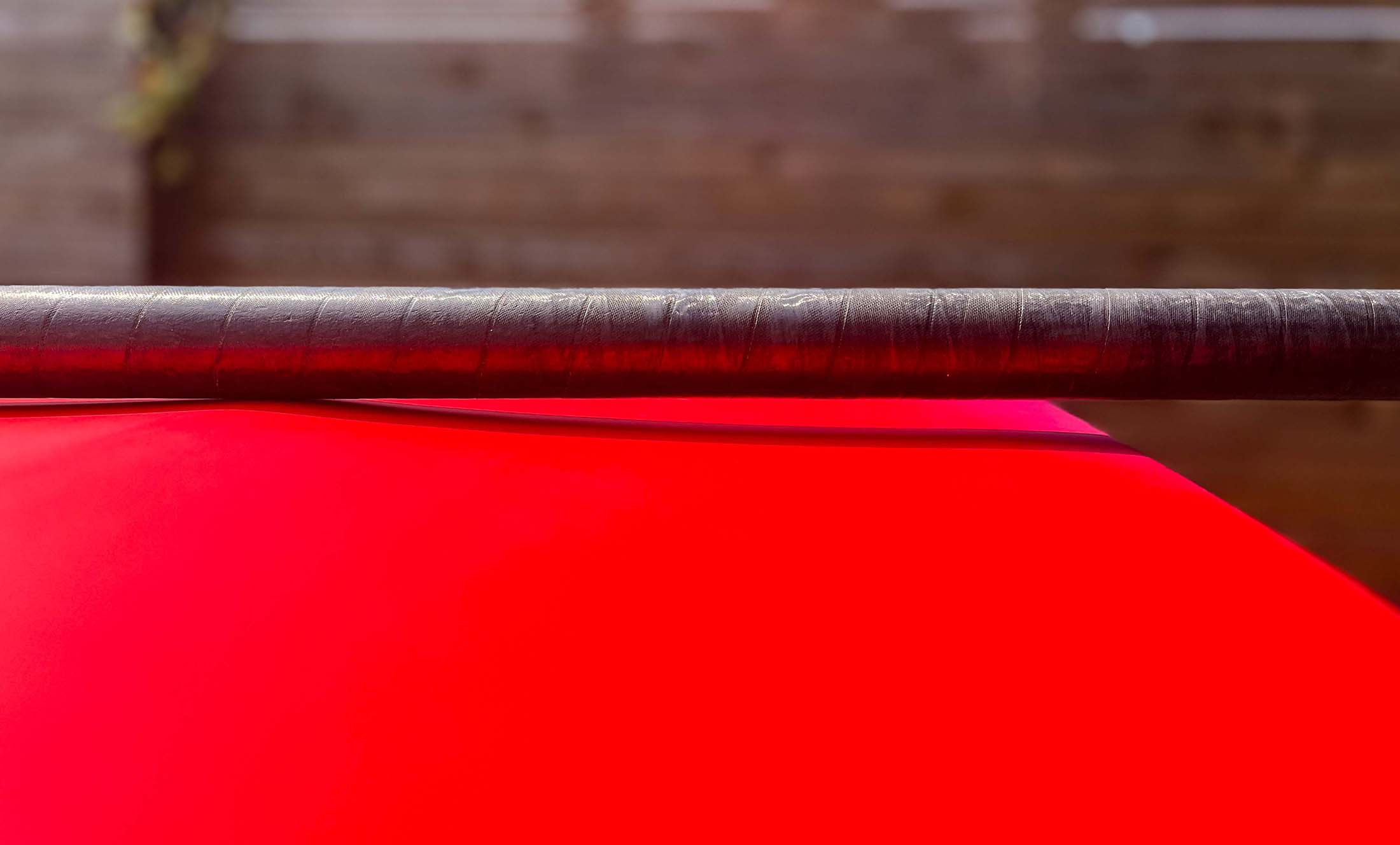
Vee bottom close up.
Concave
Concaves help increase lift and allow the board to release, most modern boards have concave.

Why know all this?
Knowledge is key and it will help you avoid making poor kit decisions. For instance, take two intermediate sailors of exactly the same level, learning to gybe on the sea. One is a ‘lightweight’ 70kg sailor and the other is of more superior stature at say 85-90kg, both are considering a 100-115L board.
The lighter weight sailor is very likely to get onto a 100-115L board in lighter wind than the heavier sailor weight. So the lighter weight sailor is probably be going to use their 100-115L board with 5.5-7m rigs in say 14-22 Knots. Therefore, the water state is likely to be relatively flat, so the lightweight would best go for something with a fairly flat tail rocker profile, slightly harder rails and decent width to get him up and planing fast.
Conversely, it will take proportionally more wind for the heavy weight to use a 100-115L board, so the chances are the water state is going to be rougher and they will be on 5-6m rigs. So, unless the heavyweight is purely interested in speed, their 100-115L board is very likely to be more about control, which would require a board with more tail rocker and softer rails e.g. Dyno. Whereas the lightweights early planing 100-115L board would be like a Fox.
For stronger winds and rougher water, the lightweights 80-95L would definitely have more rocker, softer rails and easier outline E.g. Dyno/Pyro.
So, understanding a little more about rocker and design will help you get the right board for YOU.
SUMMARY
Let’s look at some on-water affects.
YOUR BOARD CHOICE COULD BE TOO FLAT ROCKERED, WIDE OR HARD RAILED IF….
- The board bounces and jumps about feeling impossible to stabilize.
- You constantly sail upwind when over powered.
- The nose catches in chop, waves and when gybing.
- Similar weight/level sailors on the same size sails have greater control than you.
Solution: Go for a board with reduced width, softer rails and increased tail and nose rocker E.g. Dyno.
Flat & Fast = Drop, Dig & Sink That 7
If you are on a board that is going super-fast and you want more control, emphasise that Sunken 7 Drop & Dig stance. Really push and sink outboard, back and down harder into the harness. Extend the front leg, flex that back leg, and dig the heel on the front foot, curling the toes up in the strap.
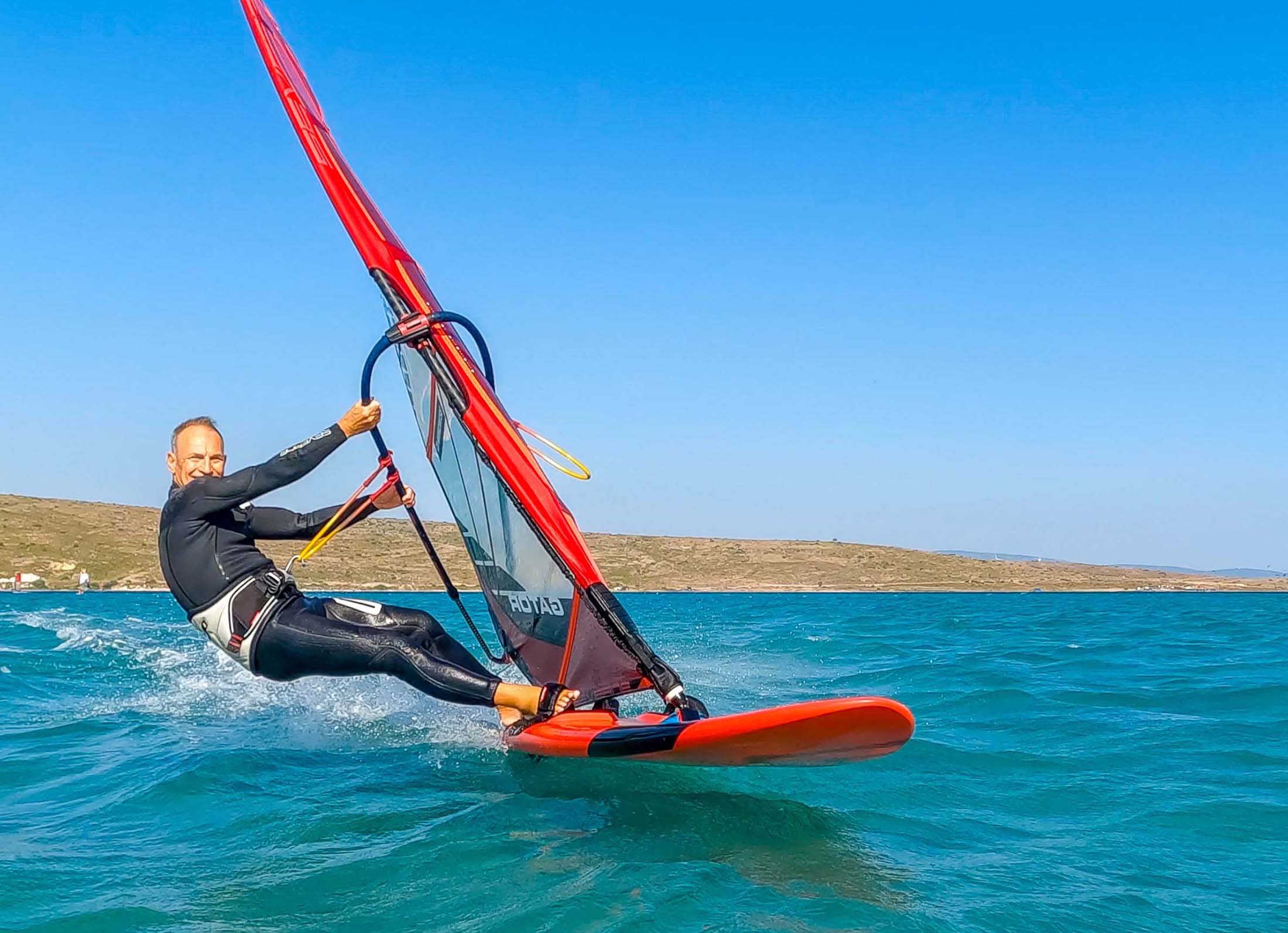
YOUR BOARD CHOICE COULD BE TOO HIGHLY ROCKERED, SOFT RAILED OR NARROW IF….
- You’re slower to plane than other sailors of a similar weight/level using the same size board and sail.
- Staying upwind is a real struggle and the board is slow to accelerate or bust through lulls.
- You always lack speed going into or out of your gybes.
Solution: Select a larger board with less tail rocker and slightly sharper rails. If you’re into Freeride sailing, go for a Fox. If it’s wave sailing, going for a faster Dyno to help you through the lulls and less than perfect conditions.
7 Up! Lift & Lock
If you’re on a very small board without a super flat rocker line, really accentuate your early planing by moving your feet forward, inboard and push the rig forward. To create that opposition with your rig, lean the body back, lifting and locking the hips to form a ‘Straight 7’ stance. Really extend the body, tightening the torso and adopting a narrow finger light grip on the boom = 7 UP!
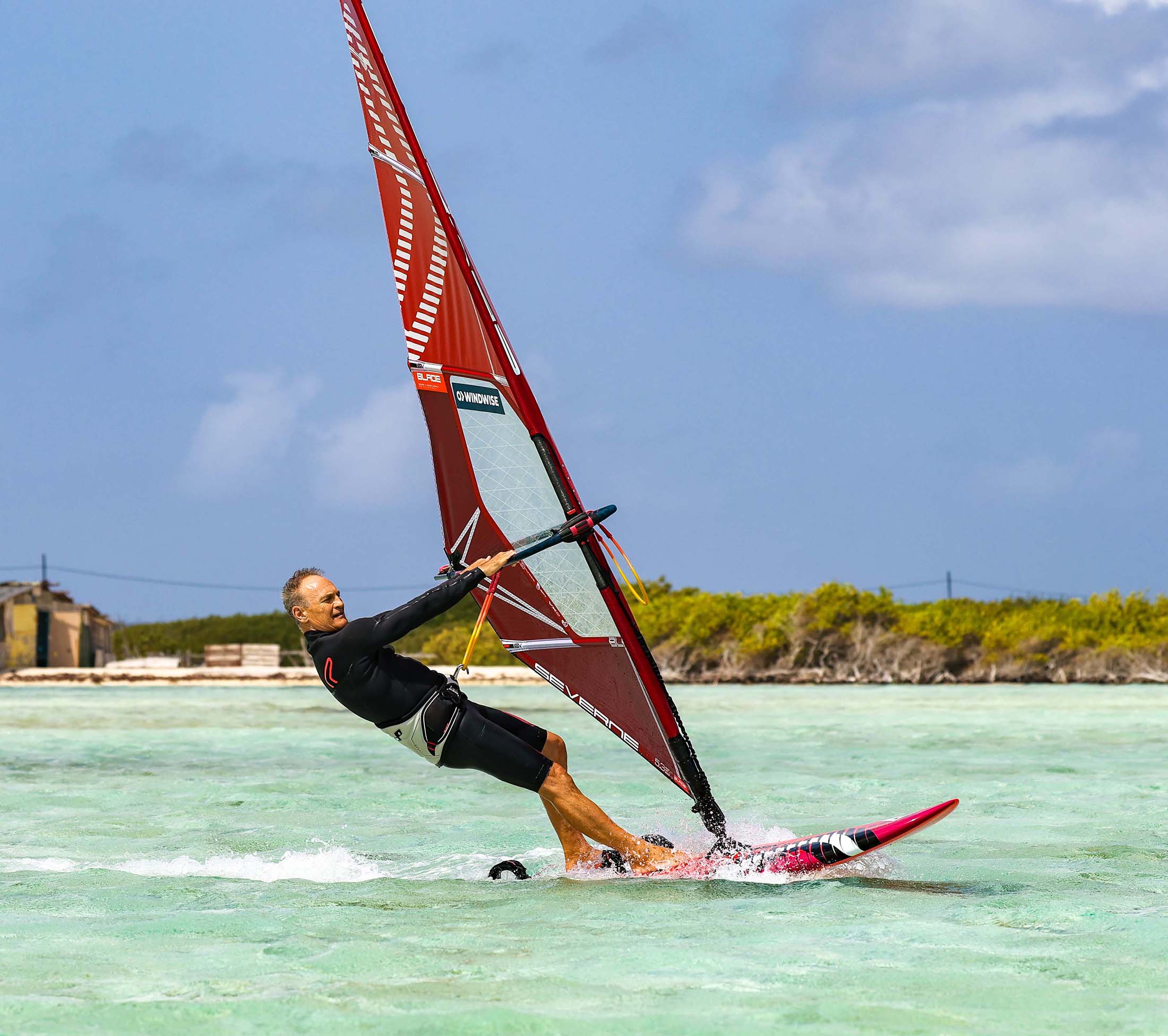
It’s always good to see real windsurfers giving everything on the water using our Windwise skills and enjoying the right kit for the conditions.
Here’s Marti Jerrad putting the new SV Fox V3 through its paces on a Windwise session in Alacati. The Fox has a very fast rocker line yet is still super easy to control at speed due to the vee. Plus, you’ll keep your hat dry around the corners as it gybes beautifully due to the forgiving softer rails upfront! Great sailing Marti!
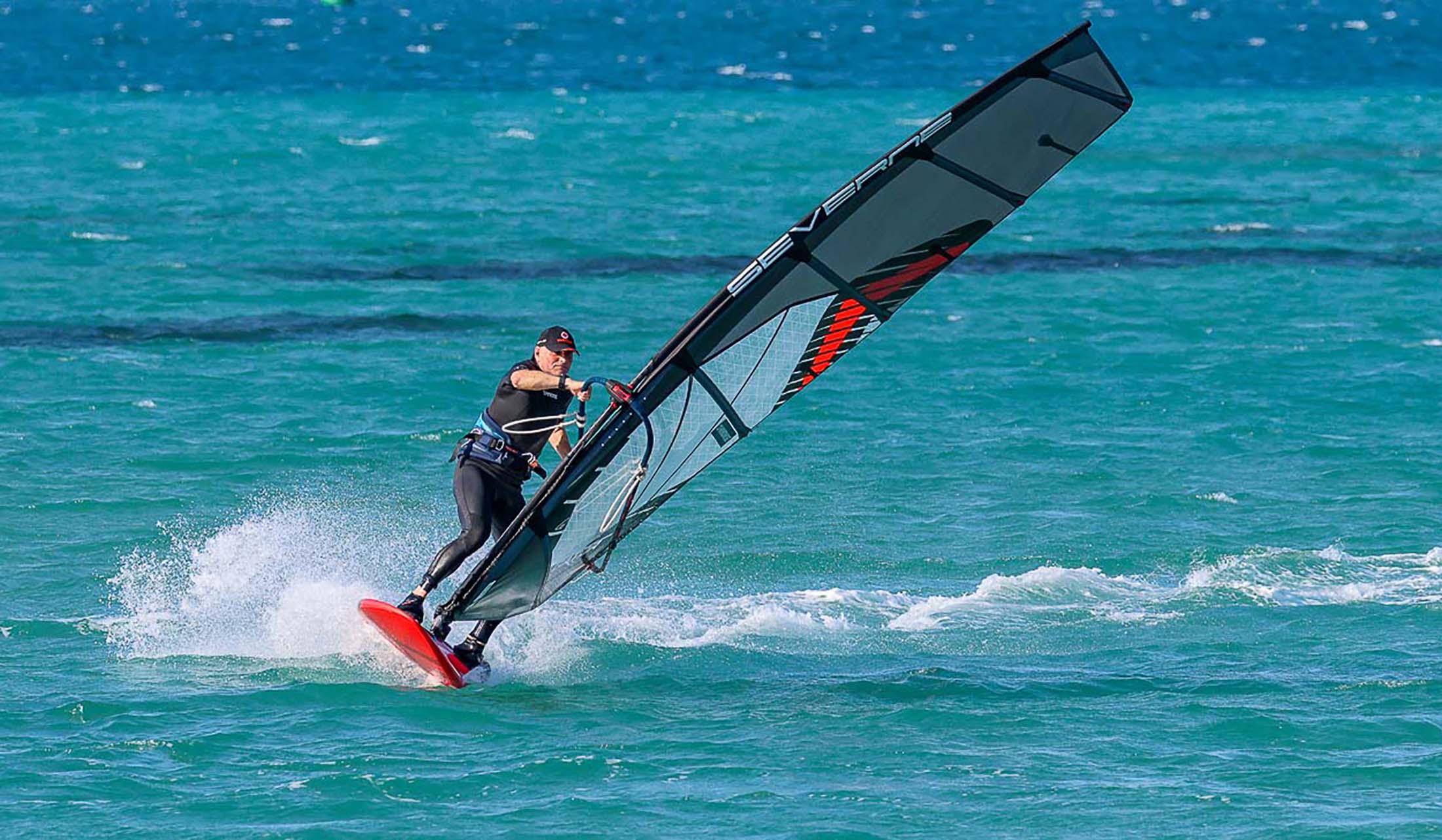
In the hands of experts, most of time, freestyle boards don’t spend much time ‘on’ the water. However, pop a larger fin in and they work incredibly well as a playful flat water, super early planer with effortless ease into the foostraps! Here’s Brian Lindley going Psycho!
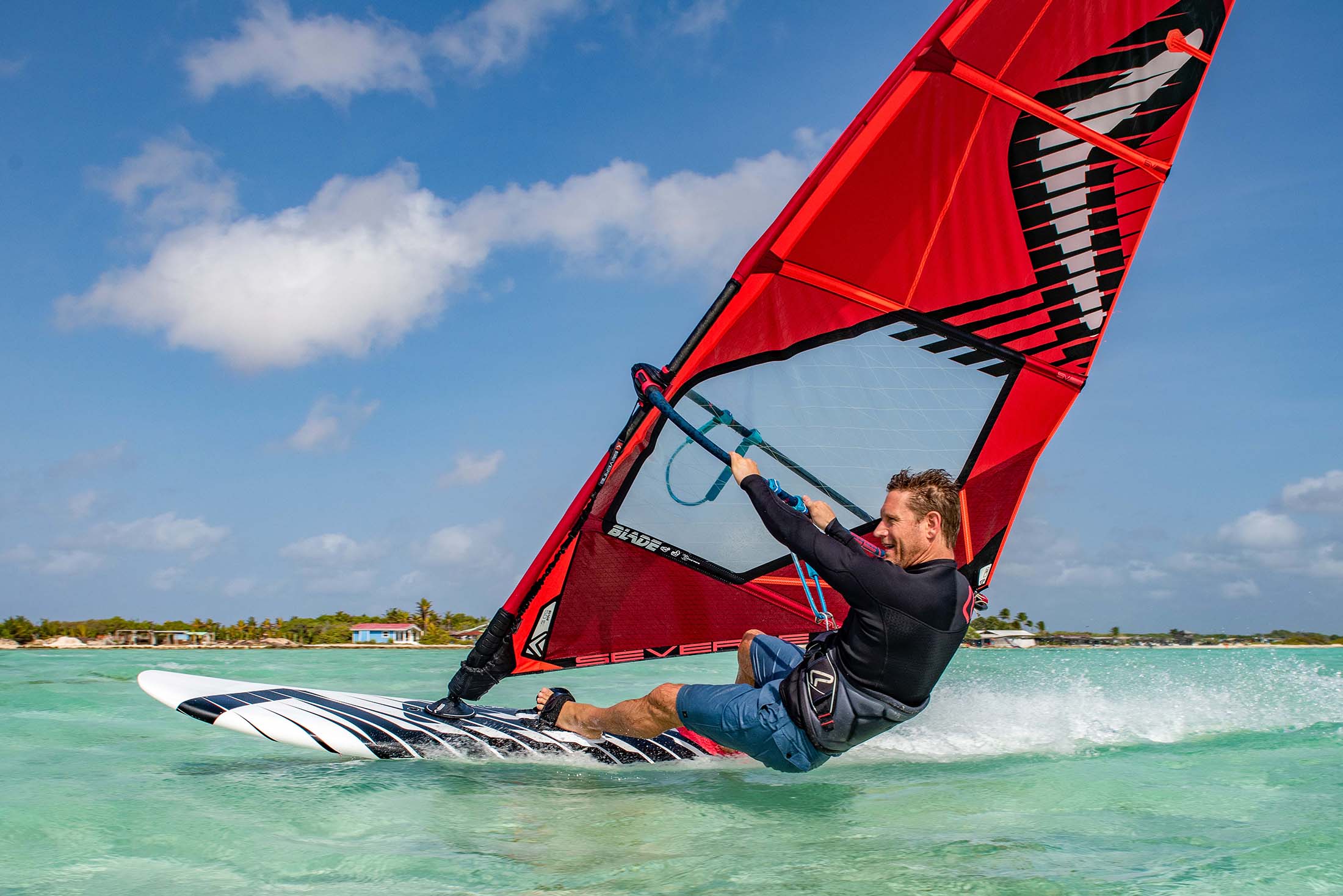
The Dyno offers a classic mix of a fast enough but forgiving rocker-line, progressively sharpening rails towards the tail for acceleration and forgiving rails upfront to really grip in the turns and increase the versatility in rough conditions and waves.
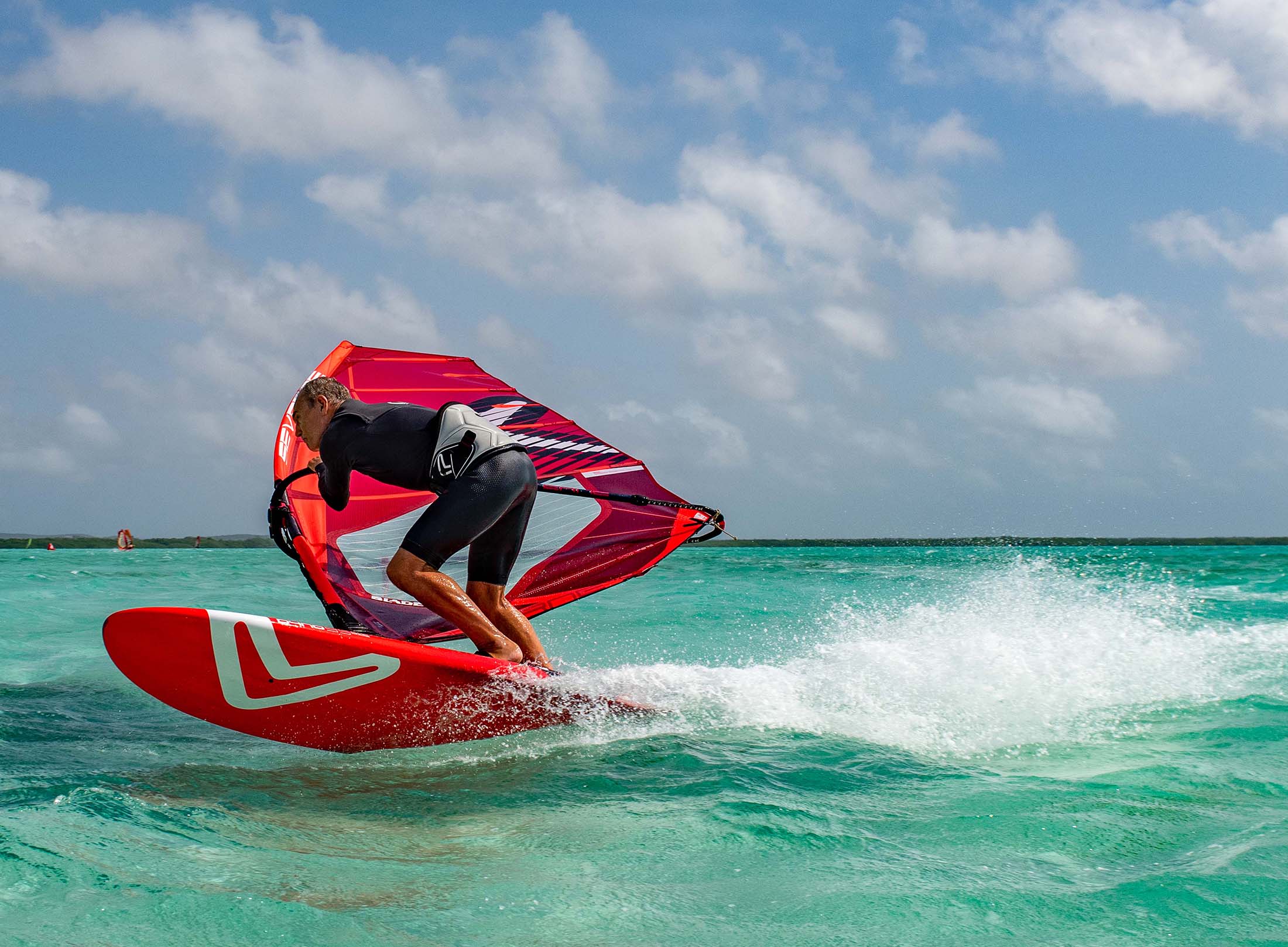
Simon Says…
I hope this feature has got you thinking more about how a board works and helps you to be wiser when buying your next board. If you have questions about this feature, choosing your next board or any aspect of your windsurfing, please contact info@windwise.net
Last Places For 2023
Mauritius Freewave 14-22nd Oct23 “The Ultimate Freewave Experience”
Now Booking For 2024
Selling out already Tenerife – Bonaire – FeelViana – Alacati – Prasonisi – Mauritius
Simon Bornhoft WINDWISE
Unique Skills Training System
Stunning Windsurfing Experiences
www.windwise.net
More guides
SPECIAL WINDSURFING DAYS – EL NINO TURNS ON
Tenerife offered several closely spaced wave sailing sessions around the Christmas period in the winter months with some exceptional conditions with the arrival of the first winter swells.
A particular spot, that did not deliver a single day the previous winter, now had Severne rider Dieter Van Der Eyken as excited as a kid on Christmas day.
West Oz Groms Dominate Oceania Youth Wave Classic
The 2024 Jaffle Shack Oceania Youth Wave Titles just concluded after four days of intense competition and coaching with the likes of Jaeger Stone.
It was undoubtedly one main events of the year for the youths in Australia. The Severne grom team showcased some serious skills and secured top positions in all U18 and U21 divisions.
BEST WINDSURF WAVE FIN SETUP
In the dynamic world of windsurfing, finding the best windsurf wave fin setup can make all the difference in your performance and enjoyment on the water.
MAAIKE HUVERMANN AND LENNART NEUBAUER ARE THE NEW EUROPEAN FREESTYLE CHAMPIONS
MULTI-YEAR WINNING STREAK FOR TEAM SEVERNE AND THE FREEK FREESTYLE SAIL
With a promising forecast On hand and two European freestyle champions to be awarded, the Freestyle Pro Tour assembled a grand final event in Brouwersdam, Netherlands.
Choosing the right board – the style guide
Severne Team Rider and Coach Simon Bornhoft, takes us through an overview of all the different board styles categories to help you build the foundations of choosing exactly the right type of board for you and your quiver.
Dyno Diaries with Simon Bornhoft – One Board One Year – Multiple Progression
As the year closes in, Simon Bornhoft looks back on his Windwise experiences from 2022 picking out some key tipping points of progression and also demonstrates how the Dyno is one board that you can take everywhere with you.
DYNO BOARD SETUP WITH SIMON BORNHOFT PART 19 – HOW TO PREPARE FOR WAVES PART 4
Push it, drive it and accentuate! When conditions are tricky or you’re new to a wave environment, it’s important to stick to a plan and ‘try’ to massively exaggerate everything, no matter what you’re faced with. So, what better than to check out some real examples of Severne rider and Windwise coach Simon Bornhoft’s clients riding the Dyno and putting into practice some of the skills we’ve covered in our recent wave series.
DYNO BOARD SETUP WITH SIMON BORNHOFT PART 18 – HOW TO PREPARE FOR WAVES PART 3
Have you been inspired by the recent PWA Pozo Wave event? Well, here’s what YOU can do to get yourself into waves. Simon Bornhoft continues his Windwise series on how to fully develop your windsurfing skills, maximize your time on the Severne Dyno and, for this issue, continue your mission in the waves. So whether you’re new to freewave/wave windsurfing or polishing up your existing wave skills, this will give you a focus and purpose for your next sessions.
EVERYTHING YOU NEED TO KNOW ABOUT YOUR HARNESS LINES – HANG IN THERE PART 4 Windsurf Foiling
Windwise coach and Severne Team Rider, Simon Bornhoft, continues his ‘Hang In There’ series, looking at different windsurfing styles and disciplines. For this issue we focus on windsurfing foiling and how to get set up for maximise flying time.

